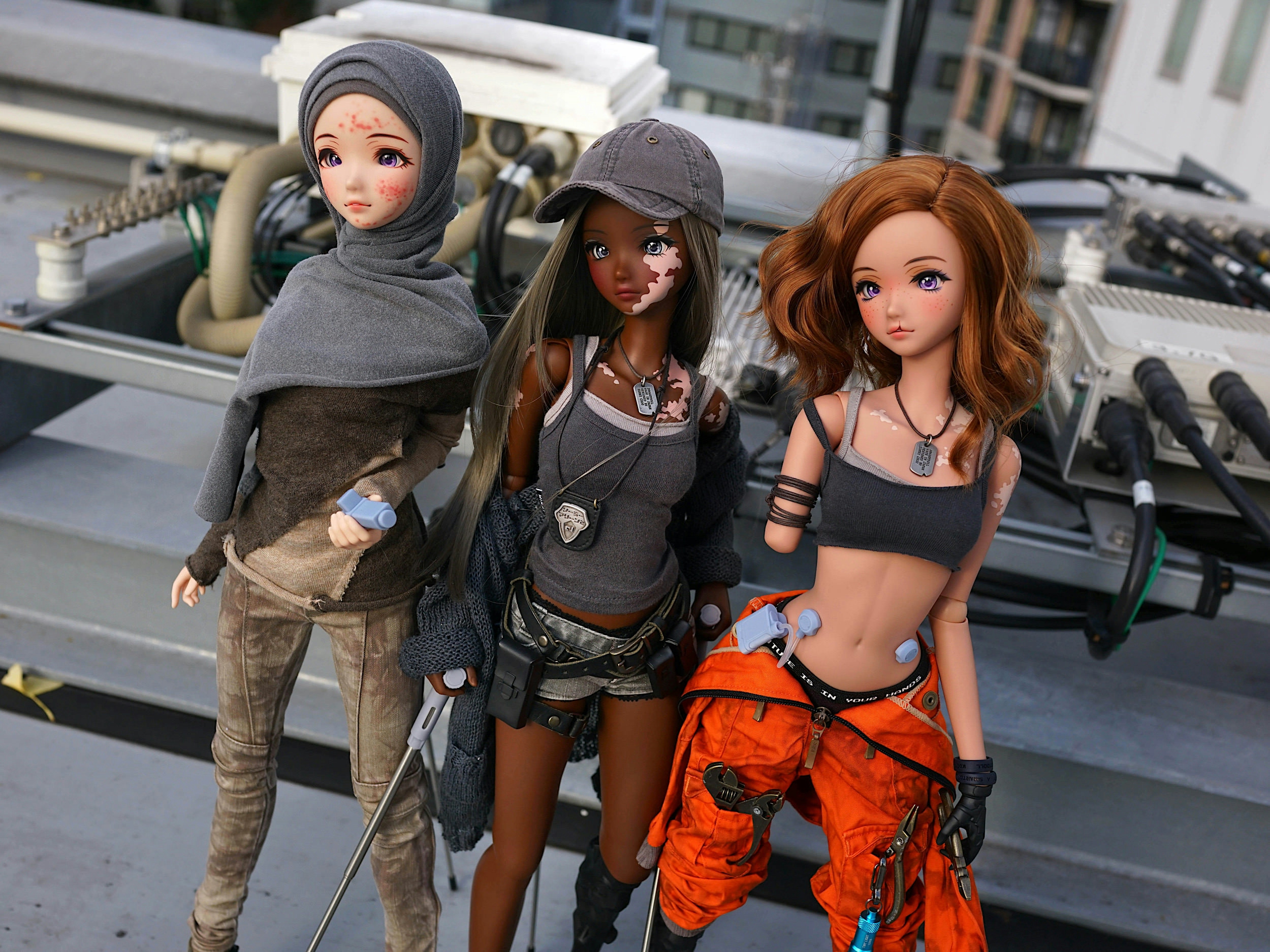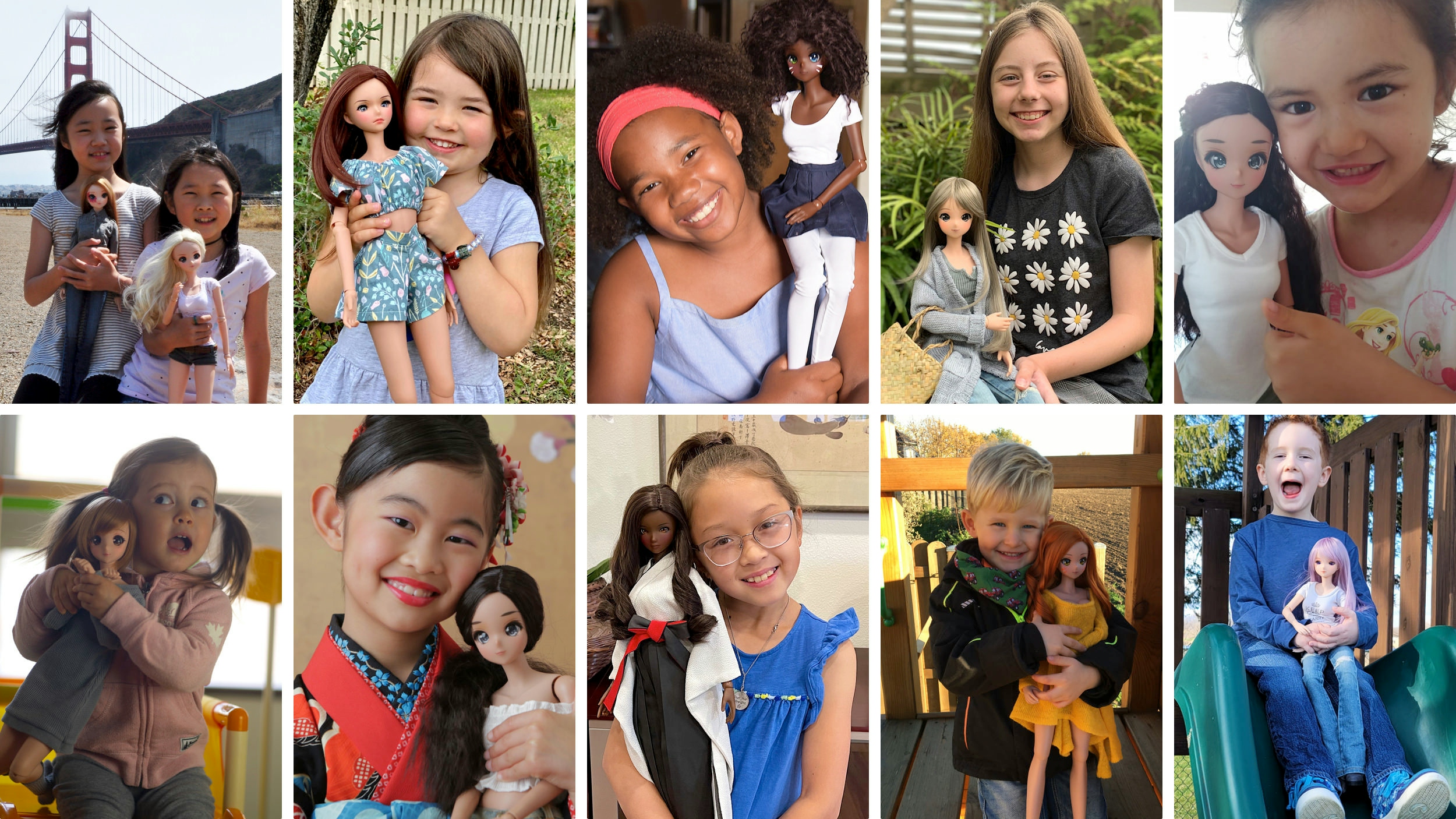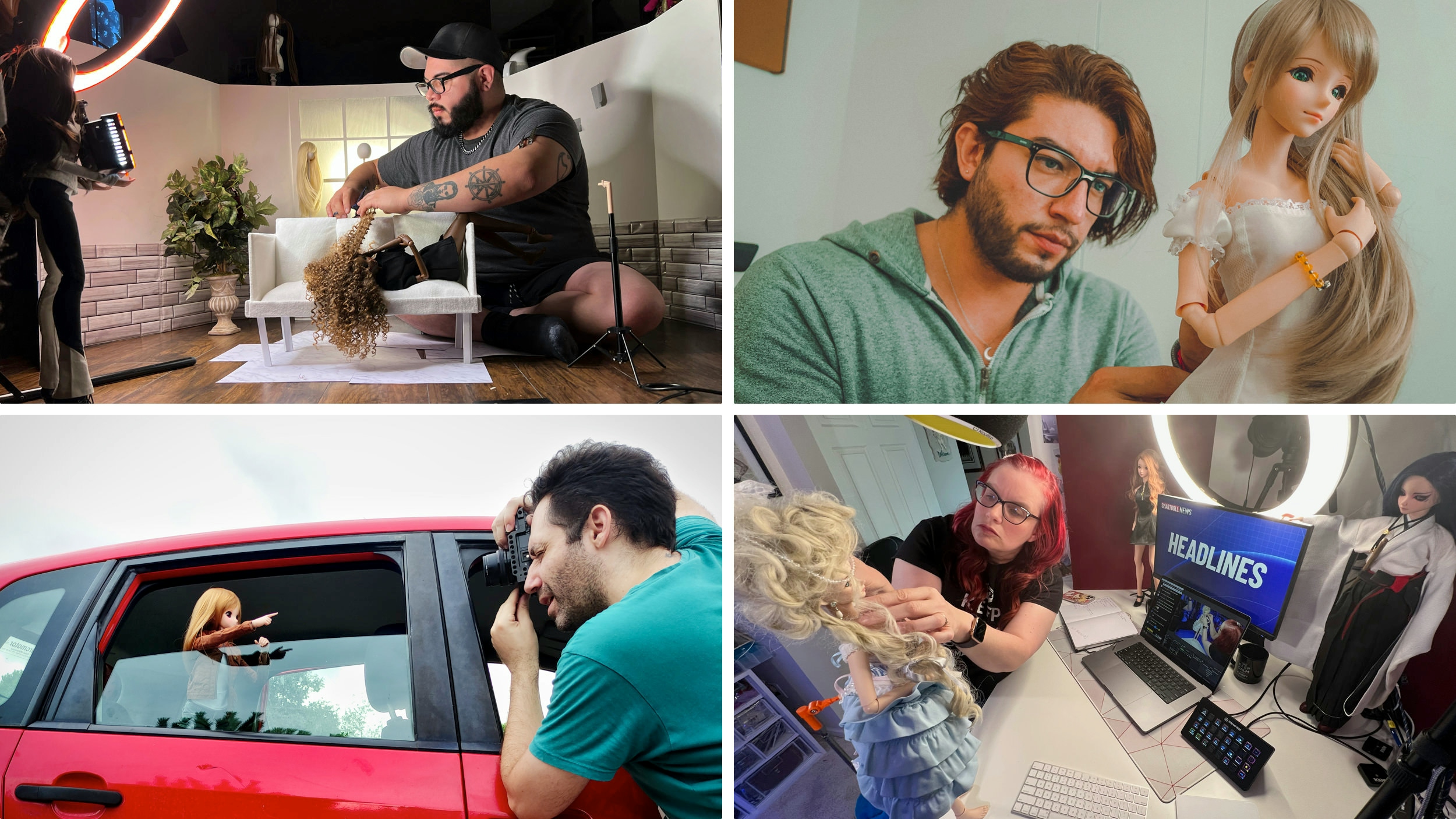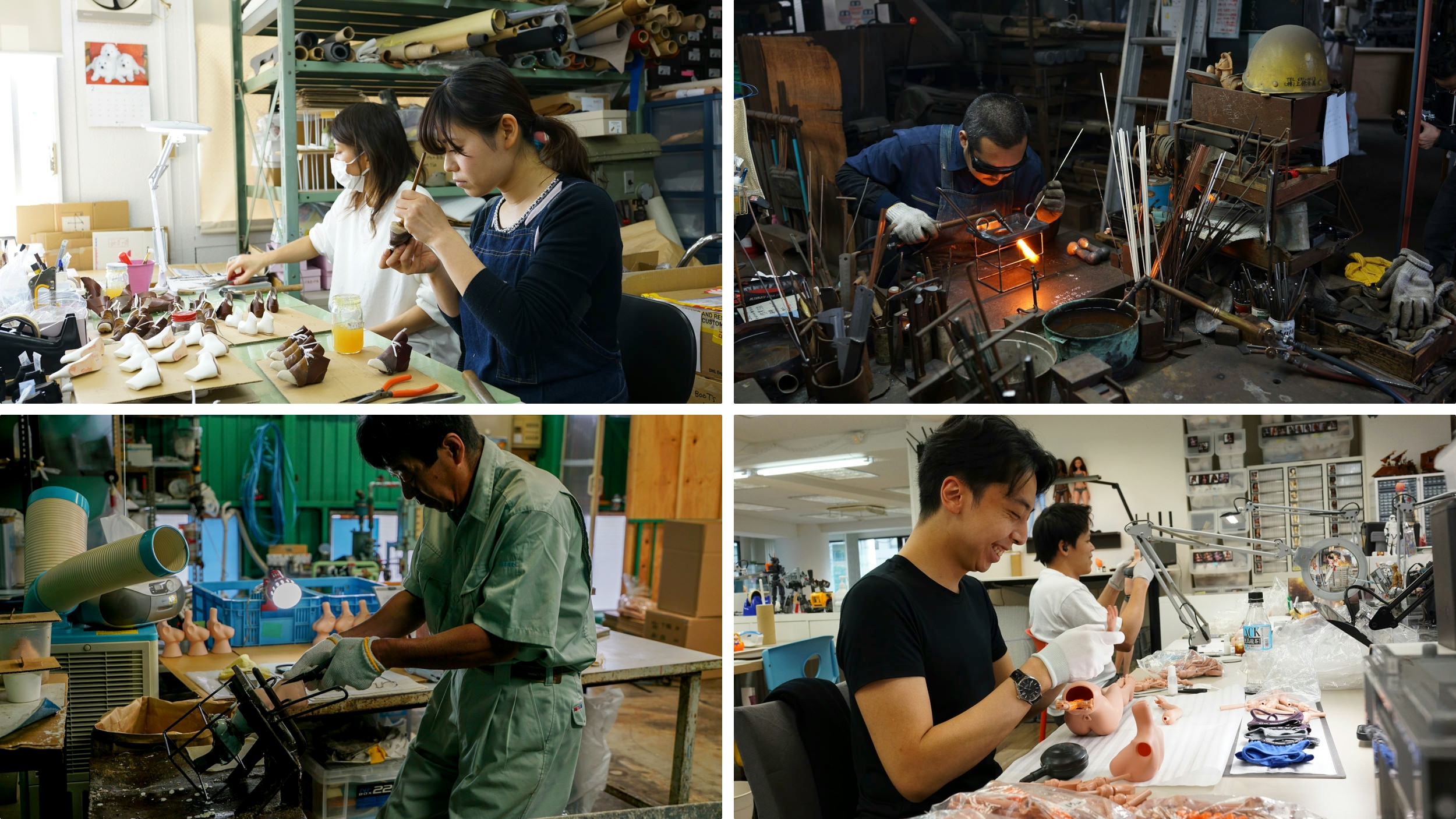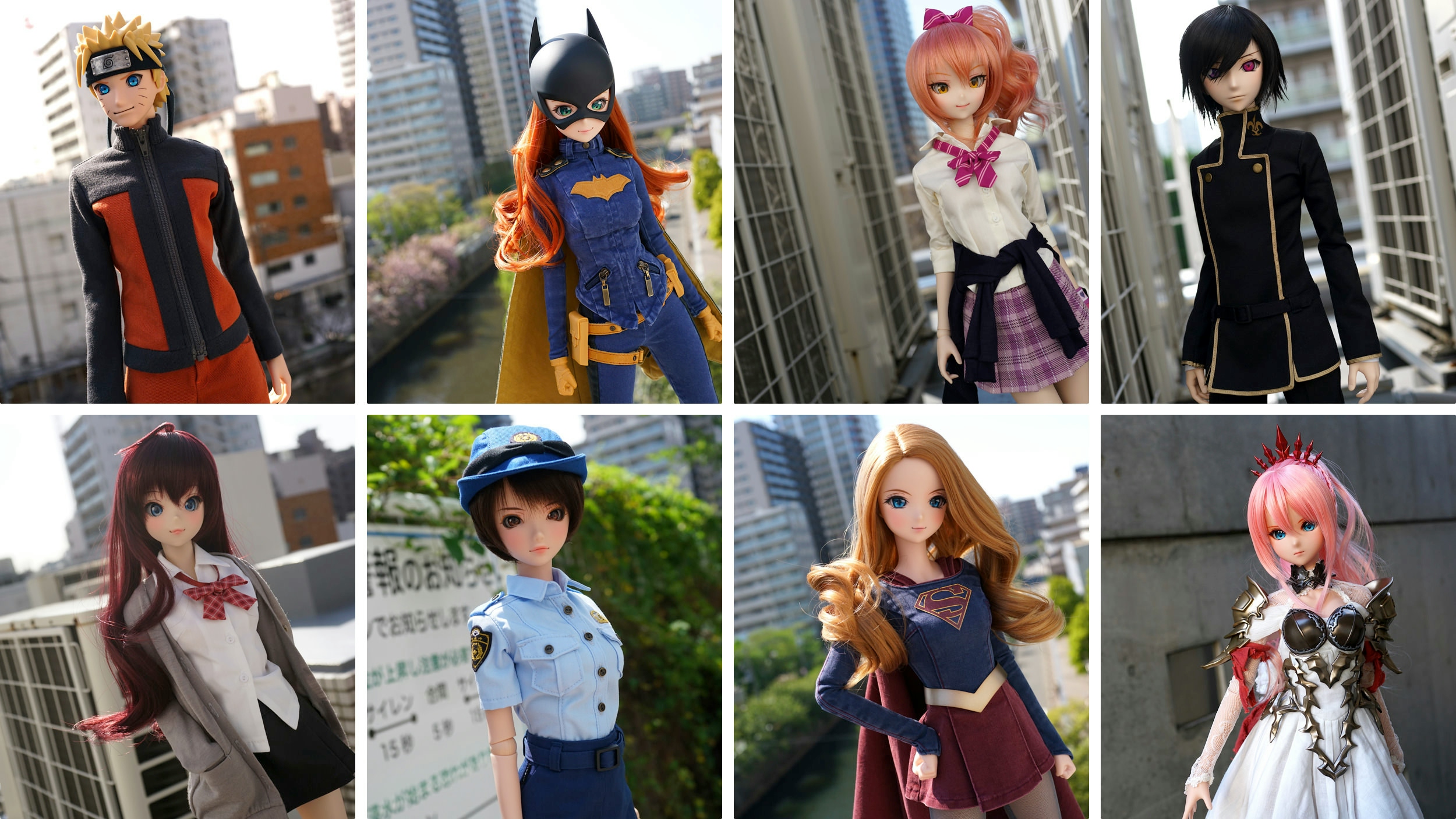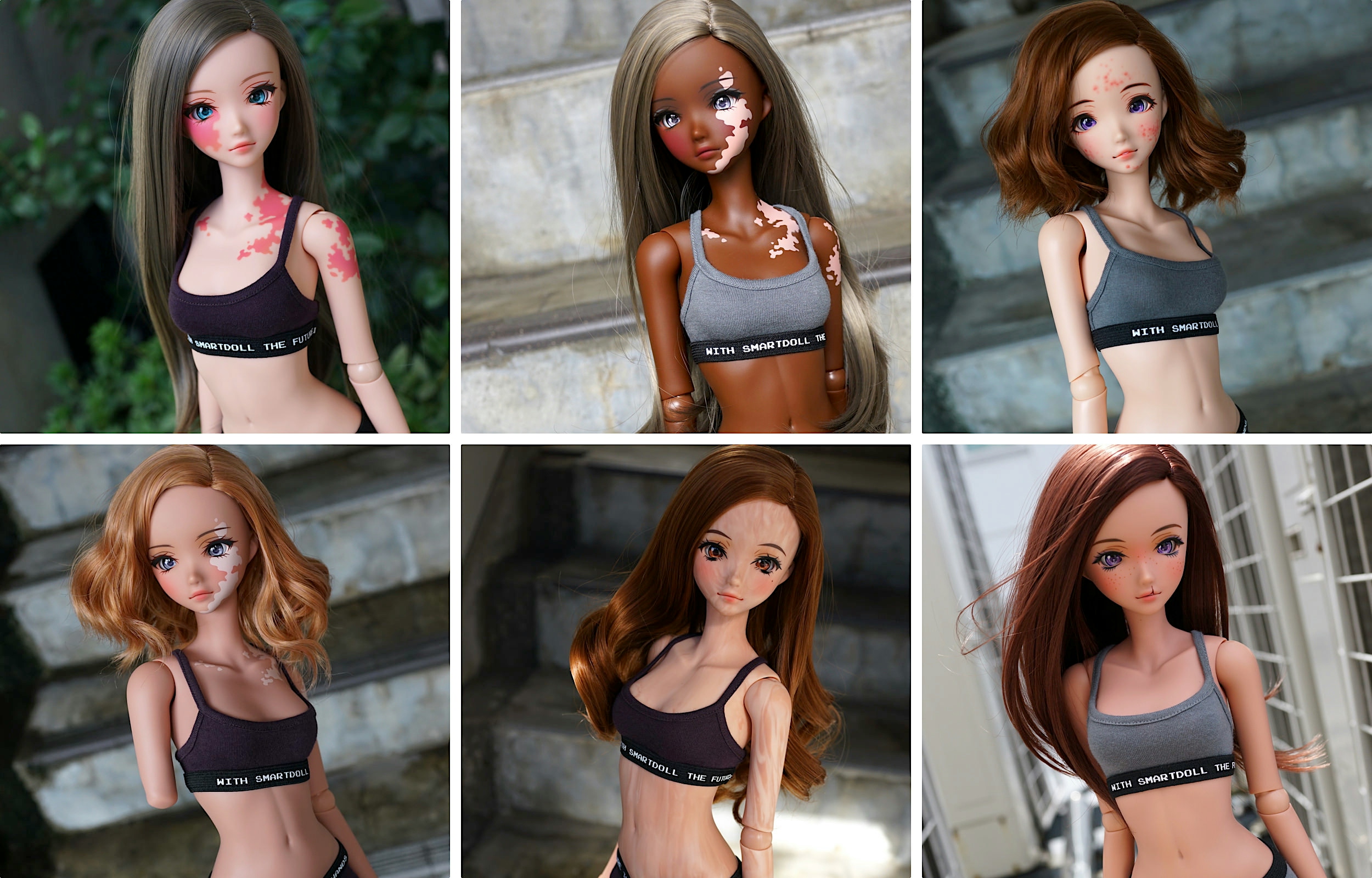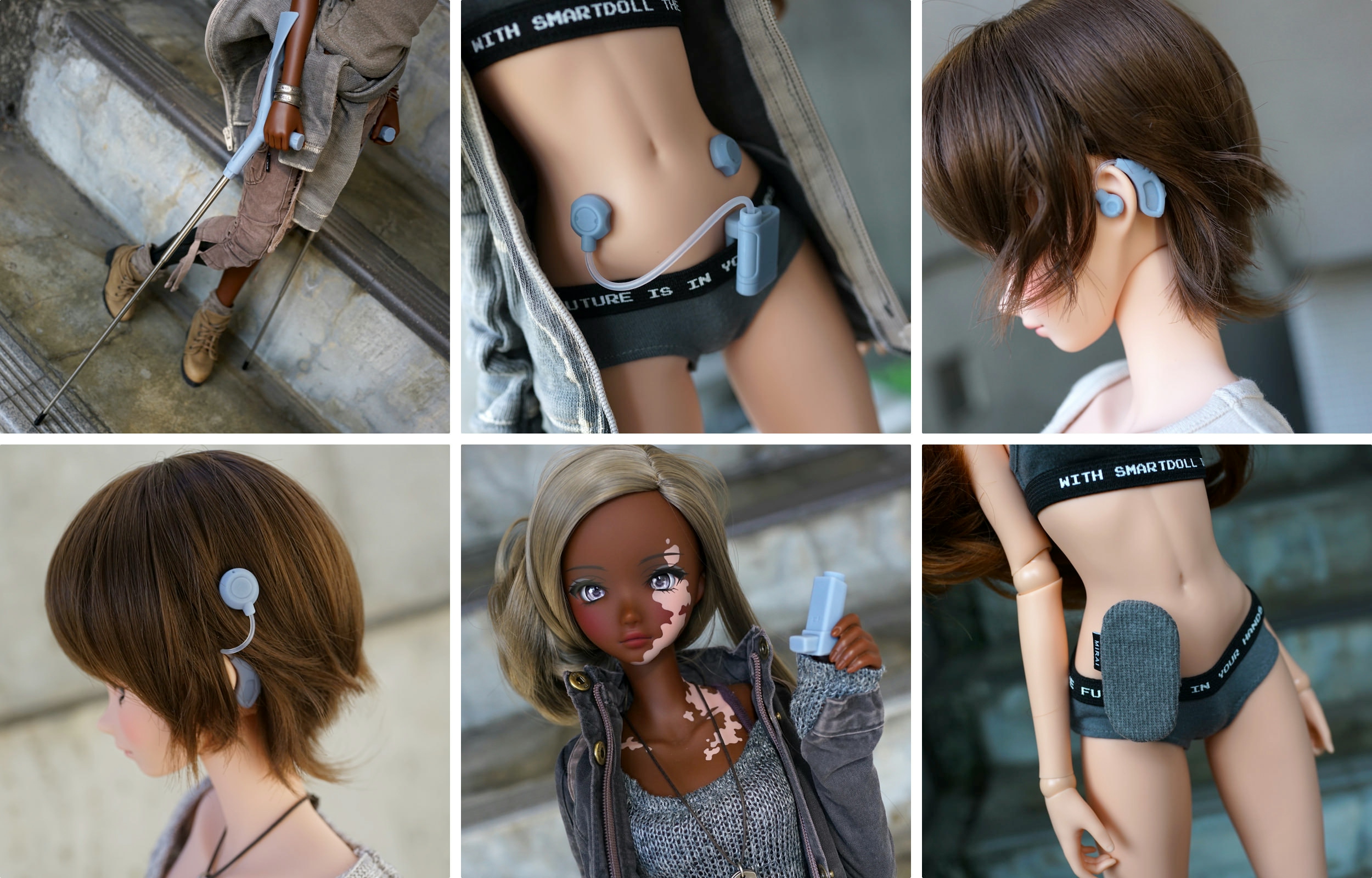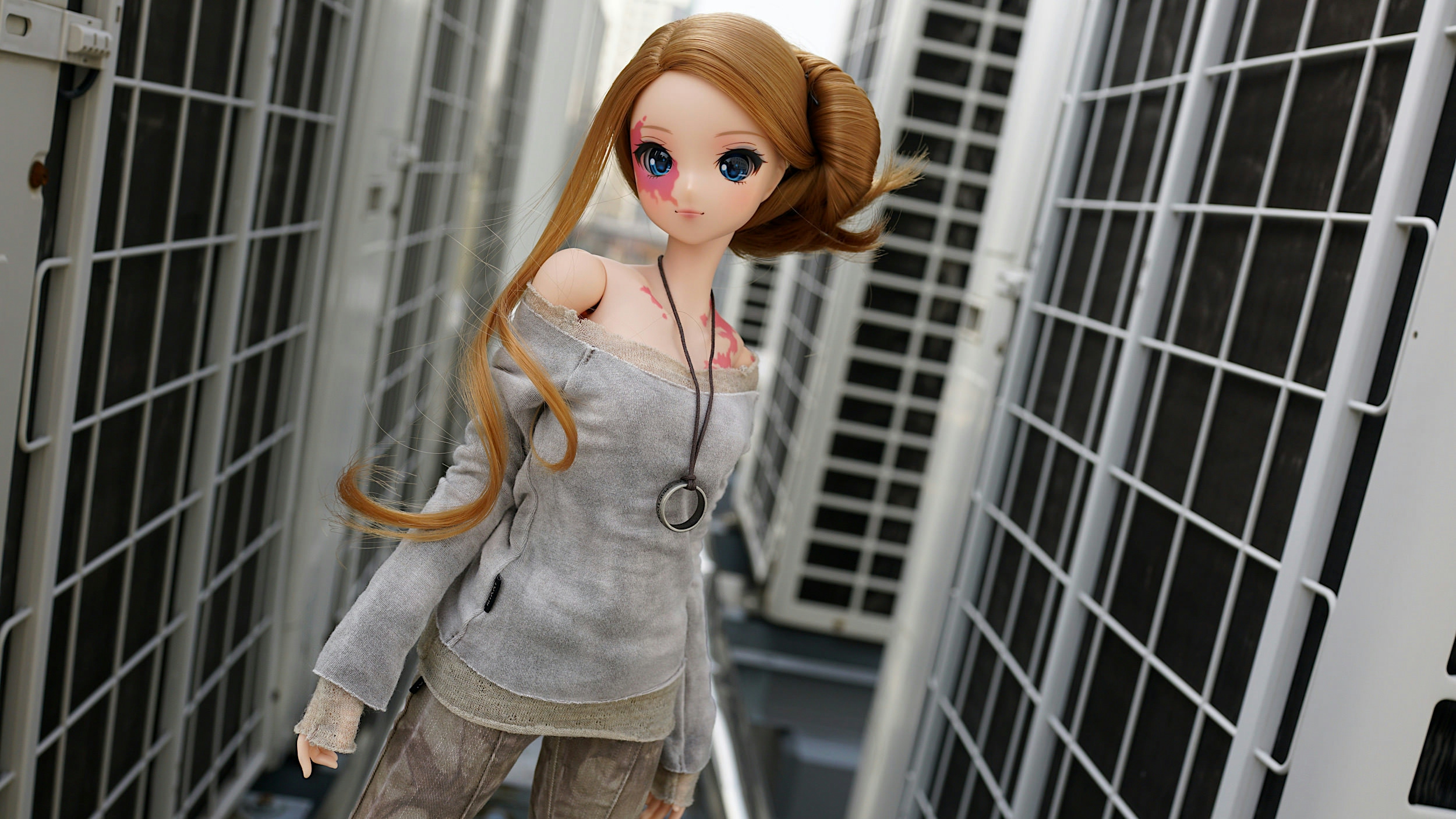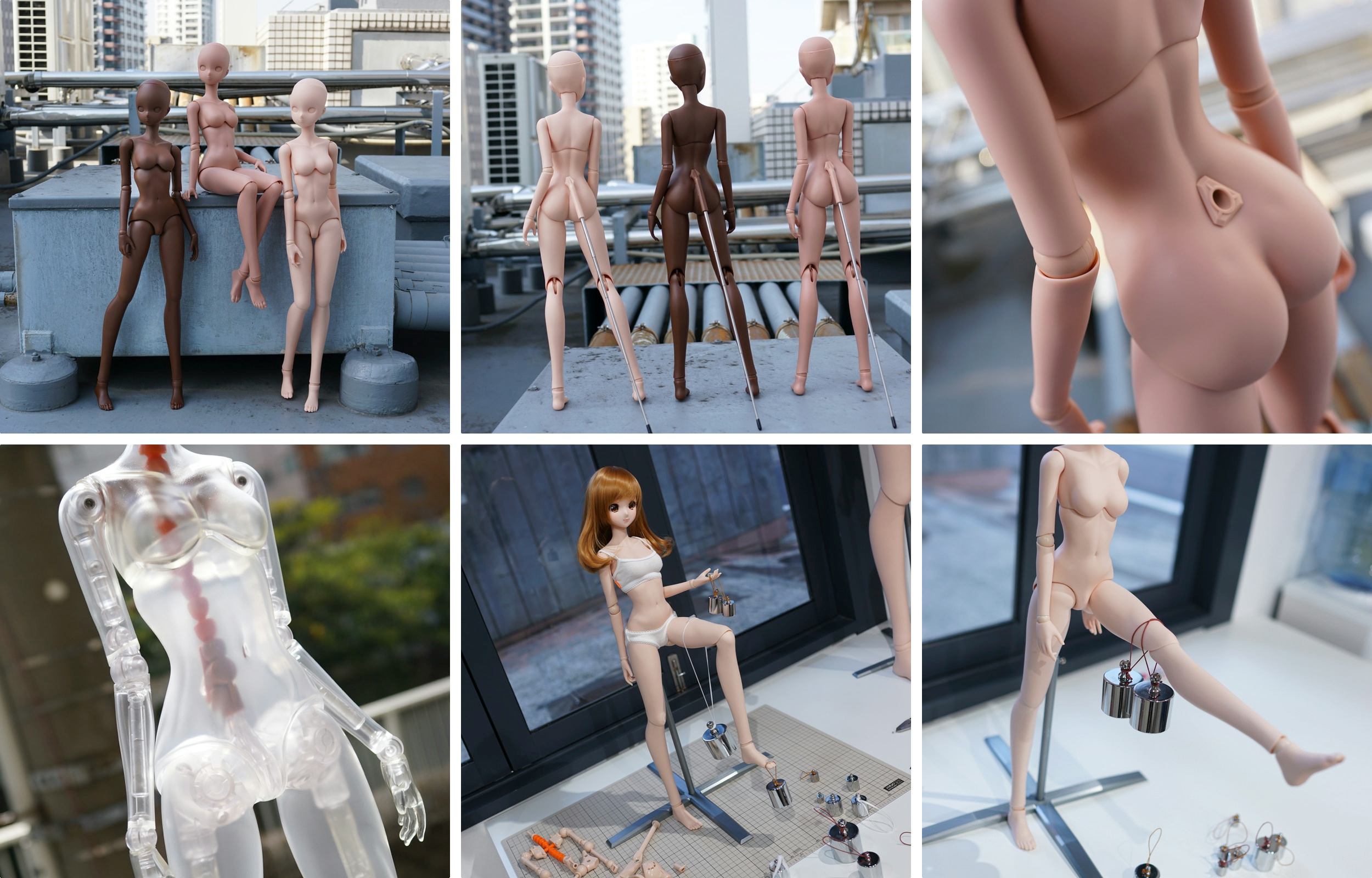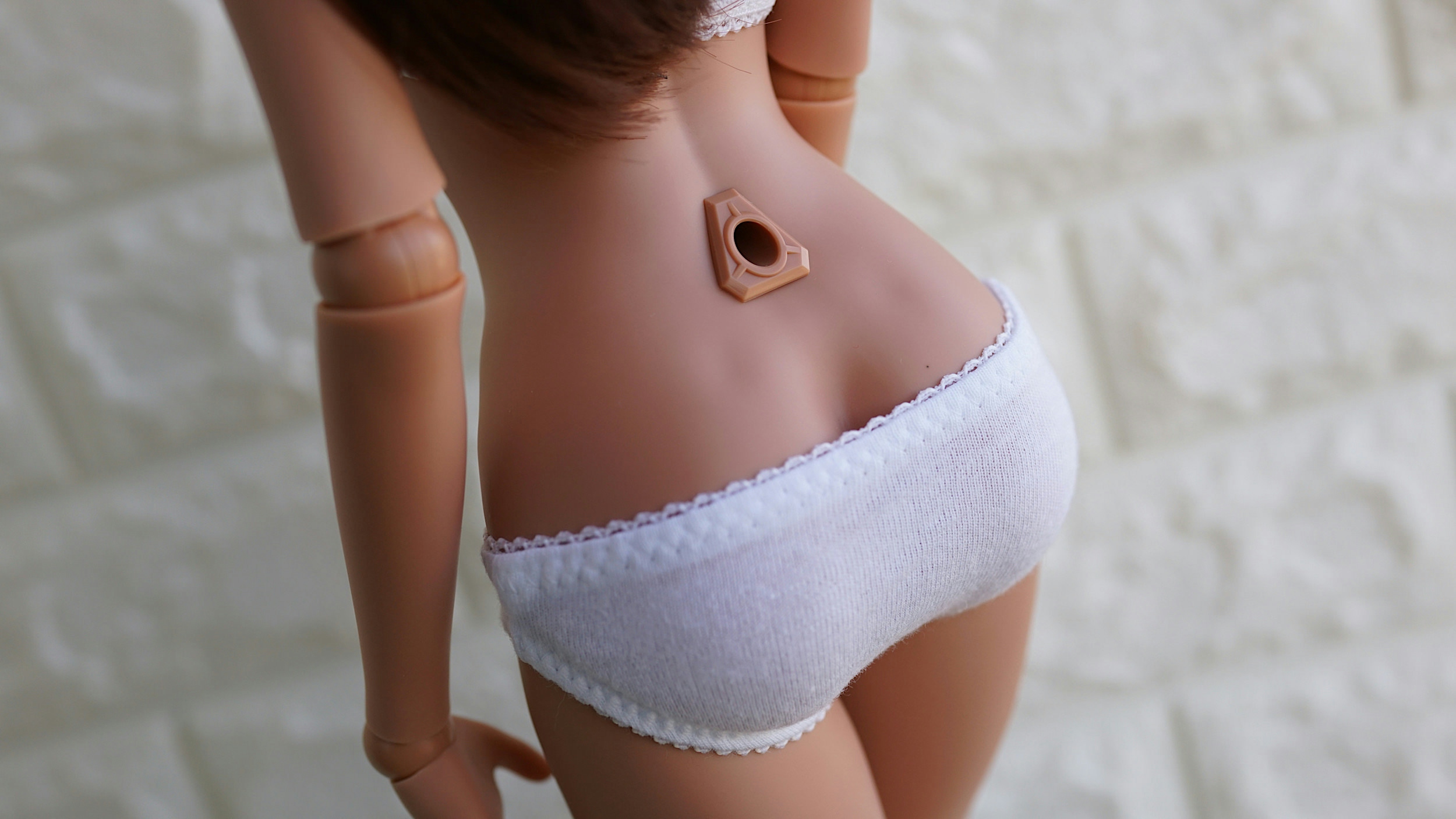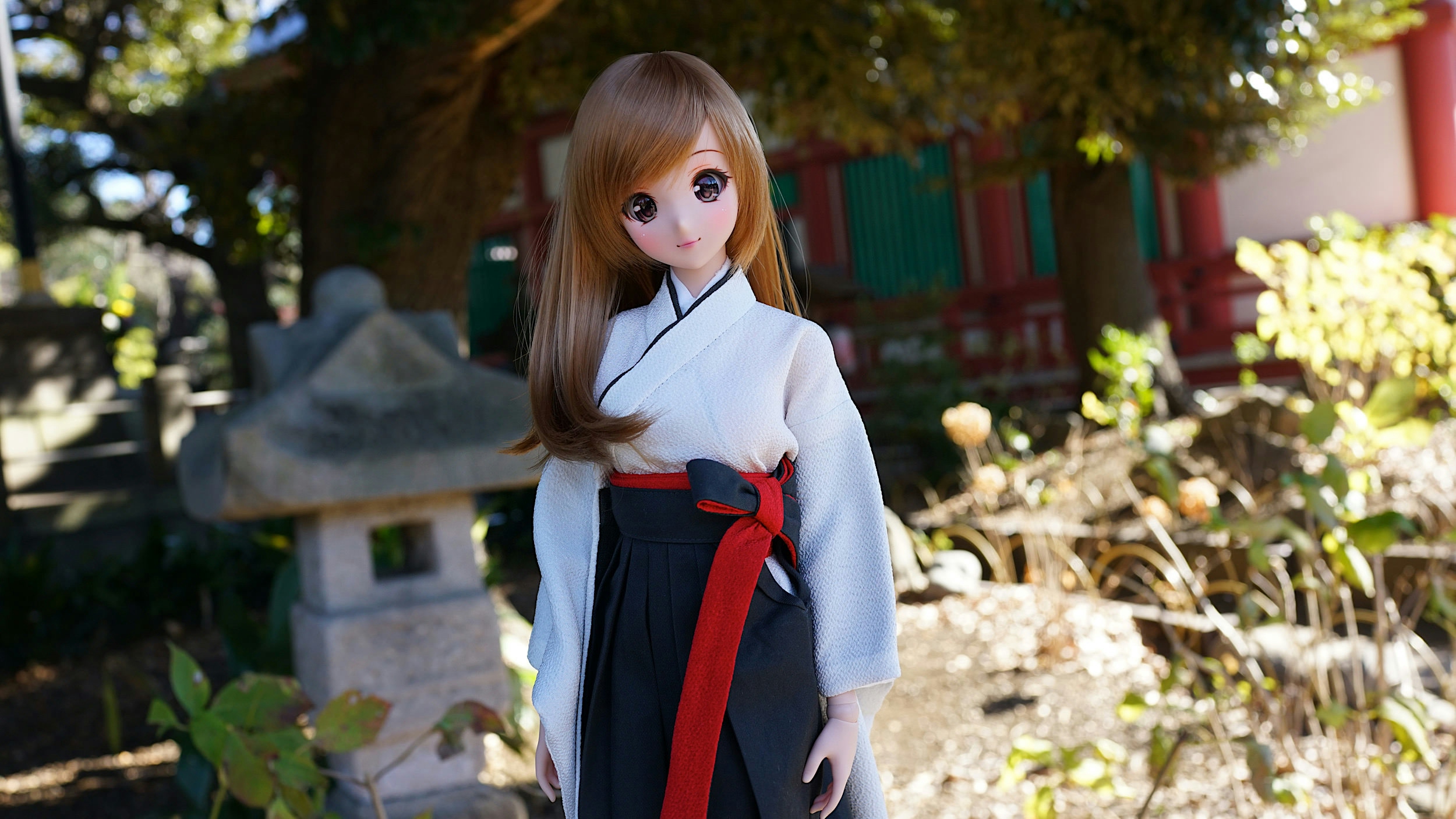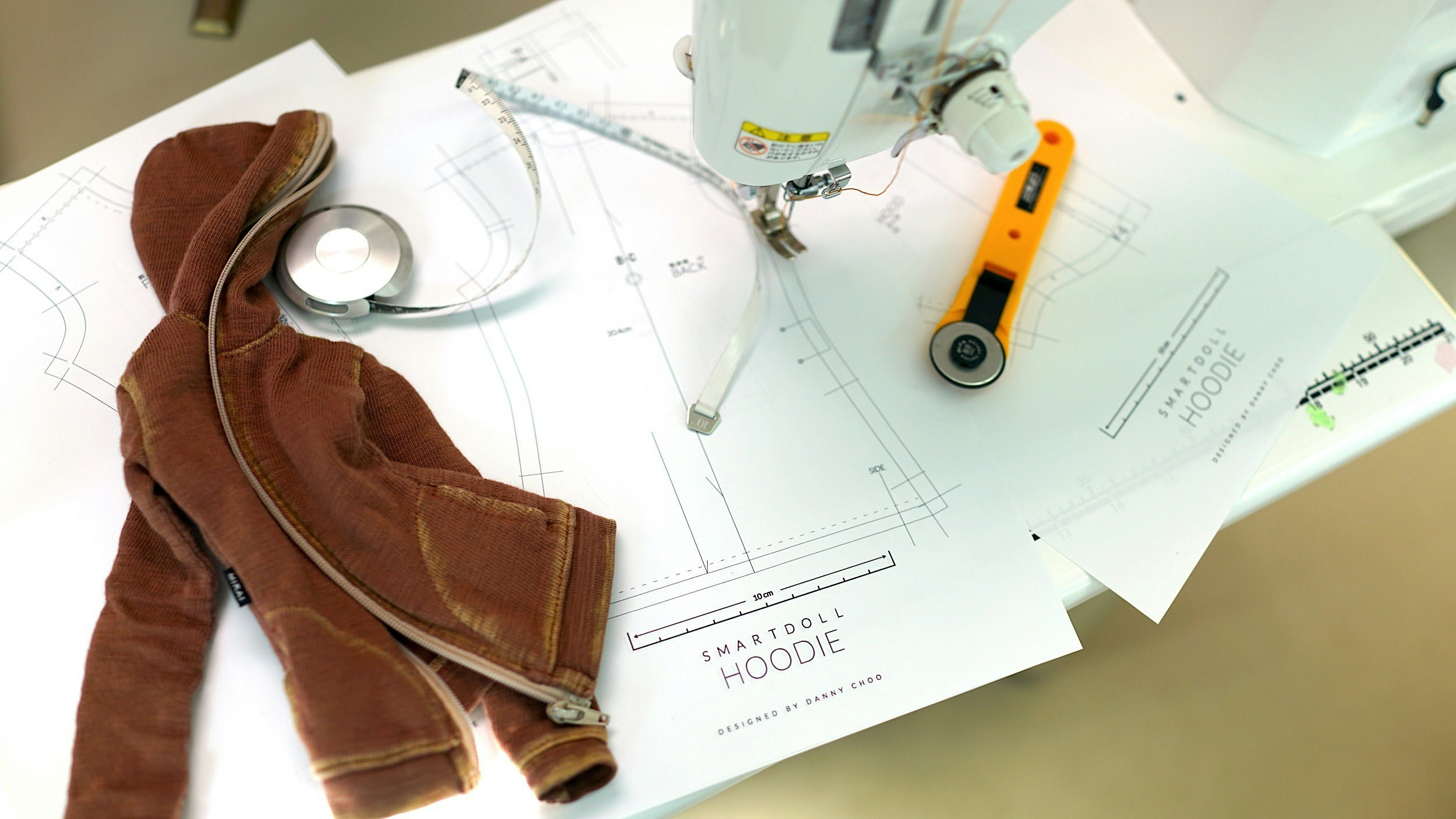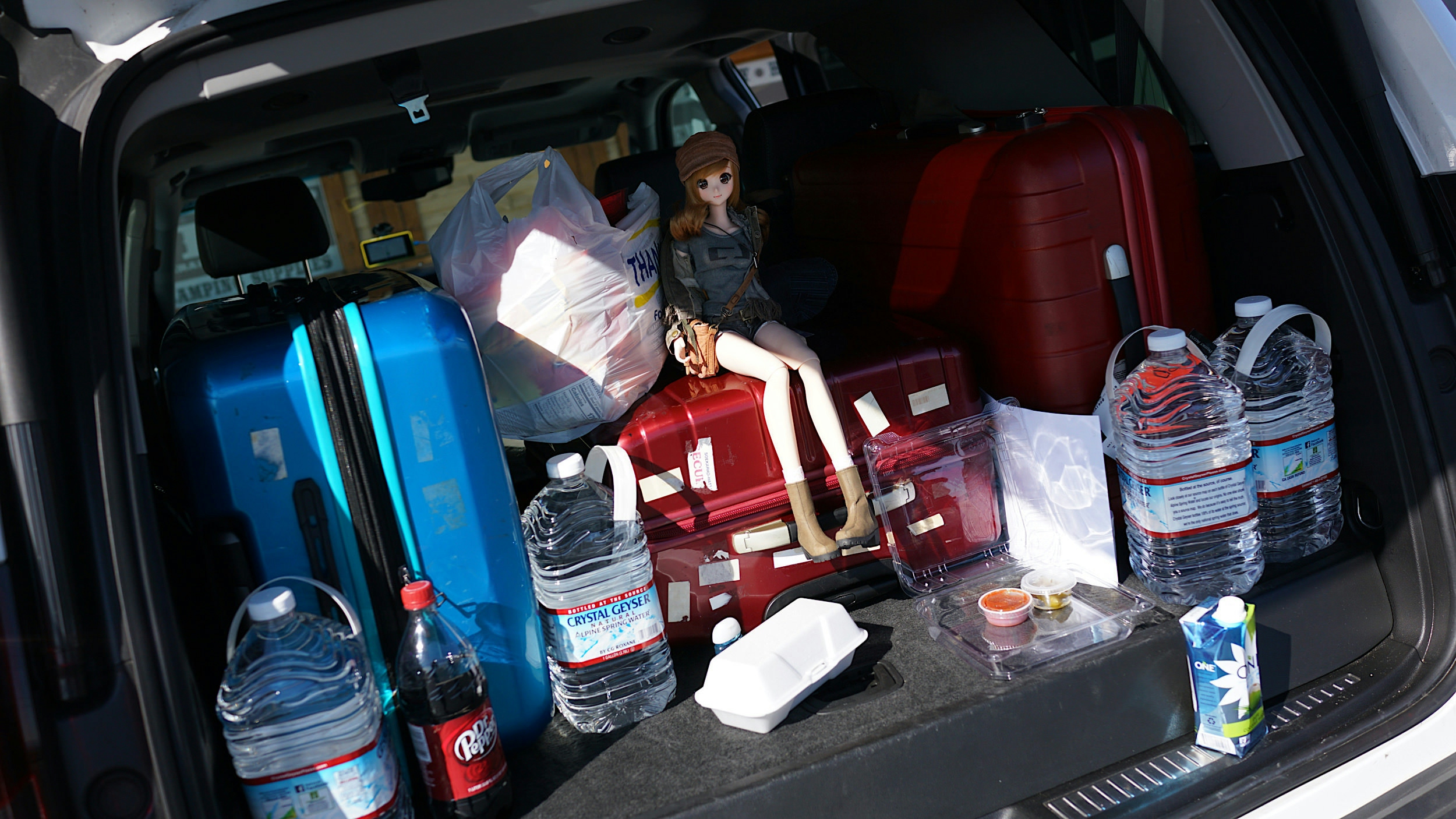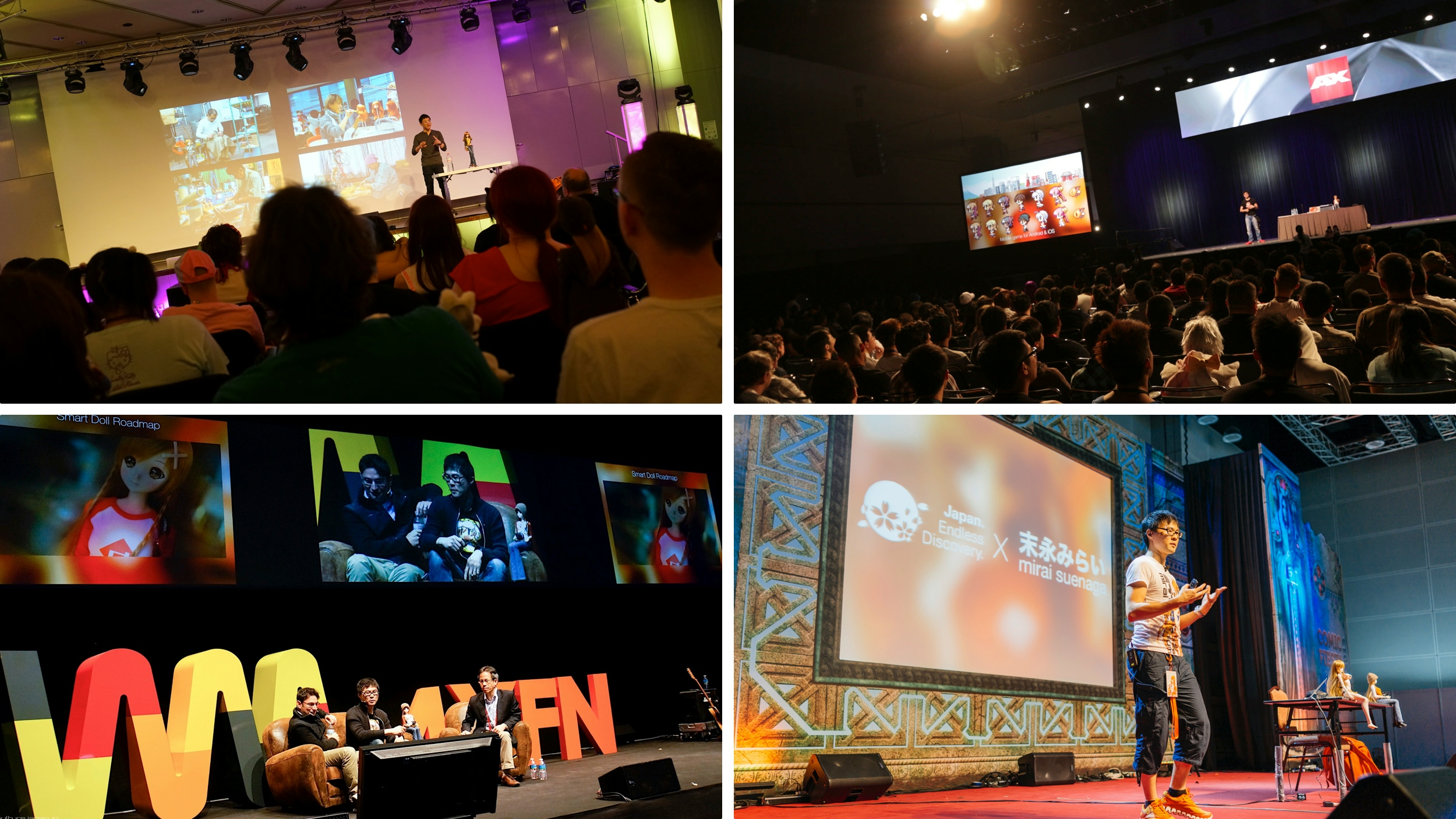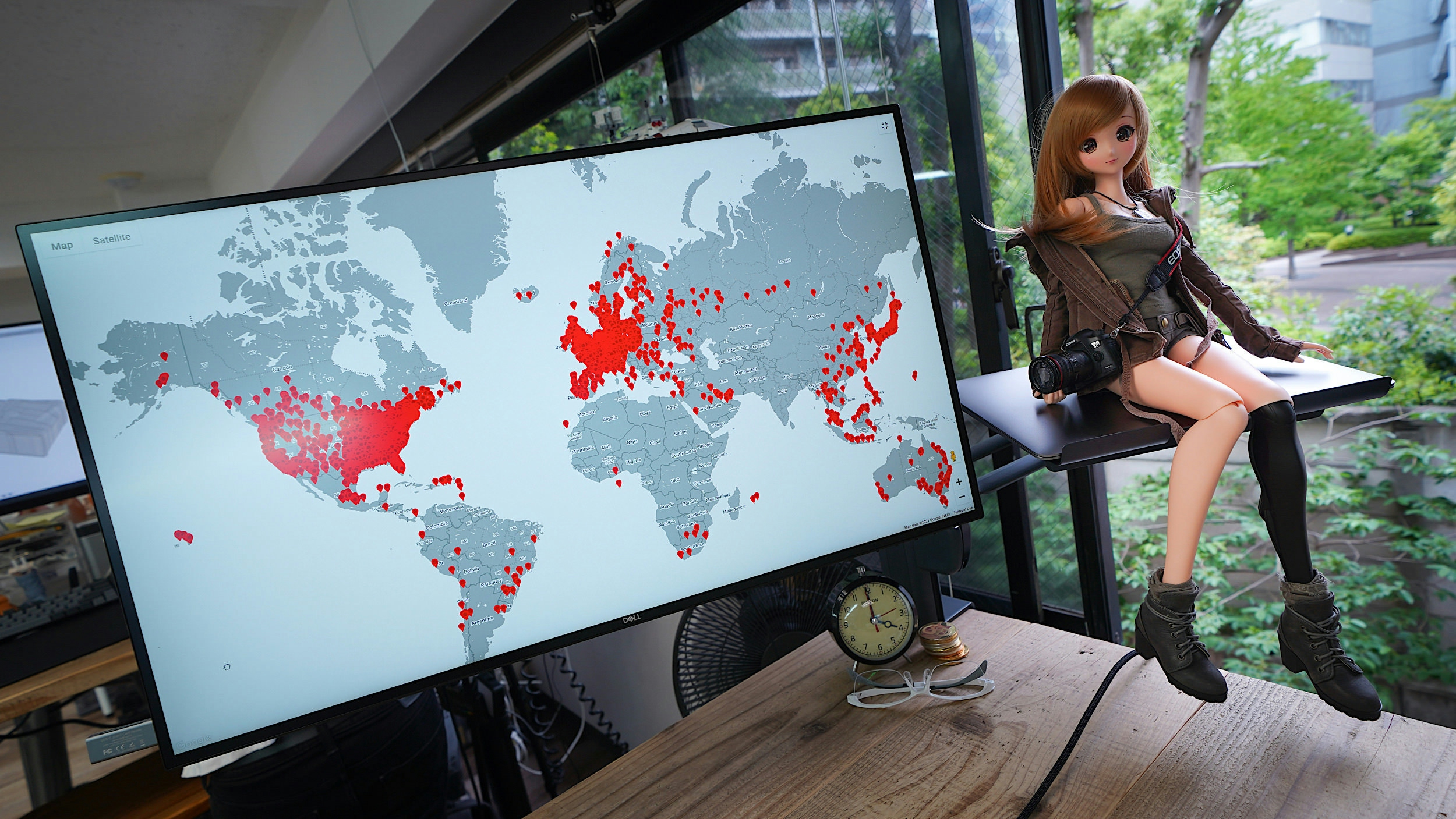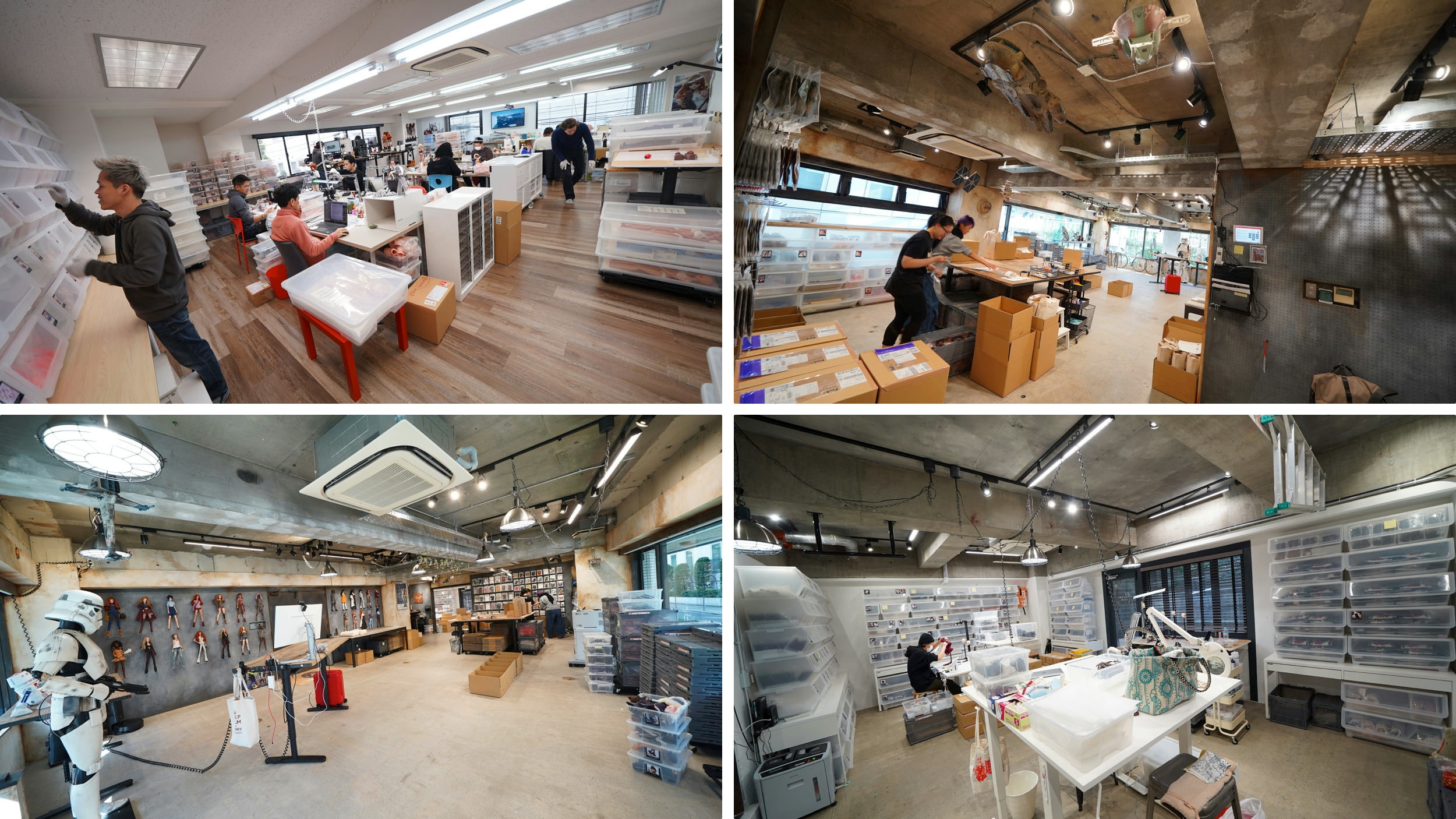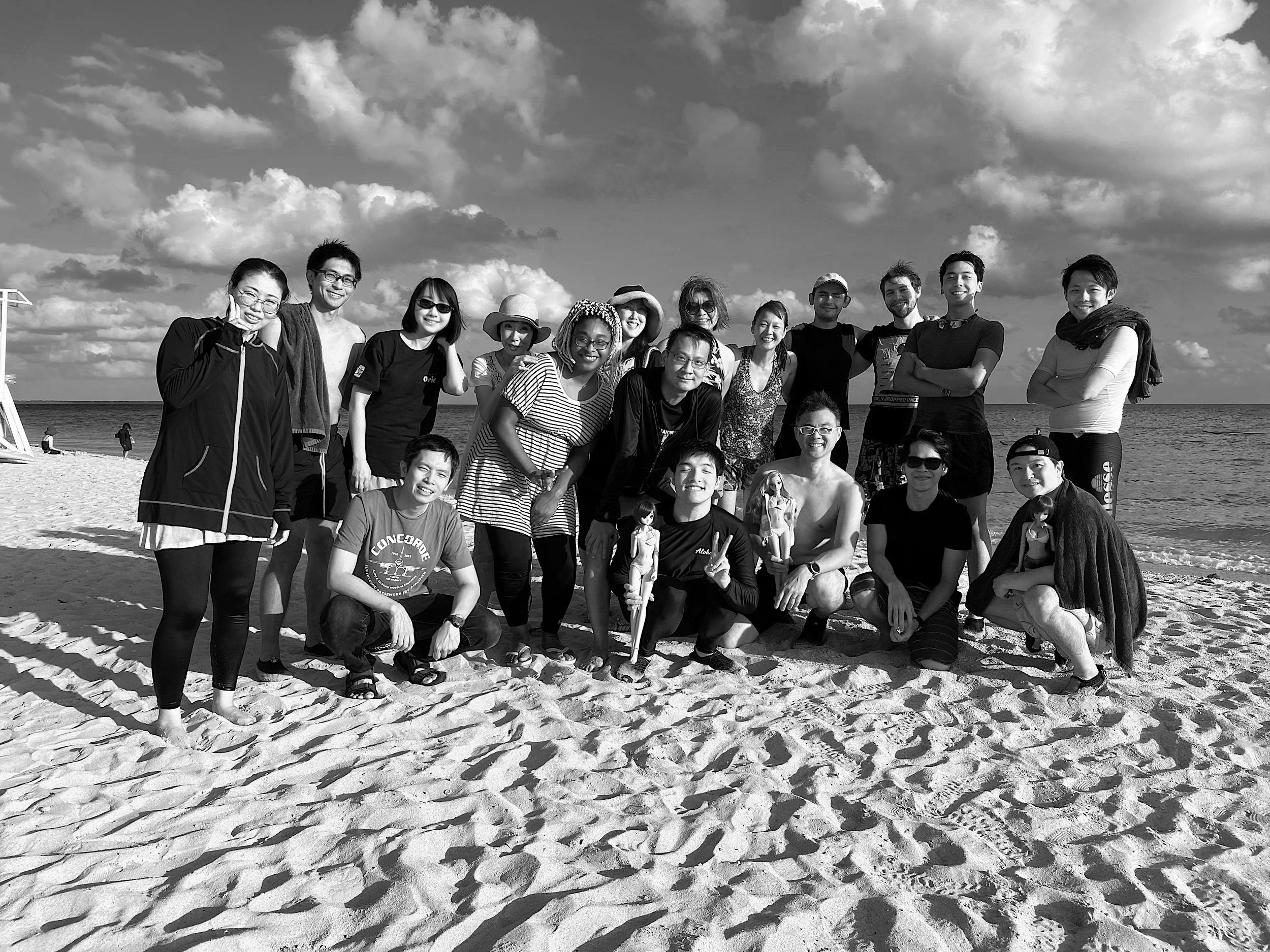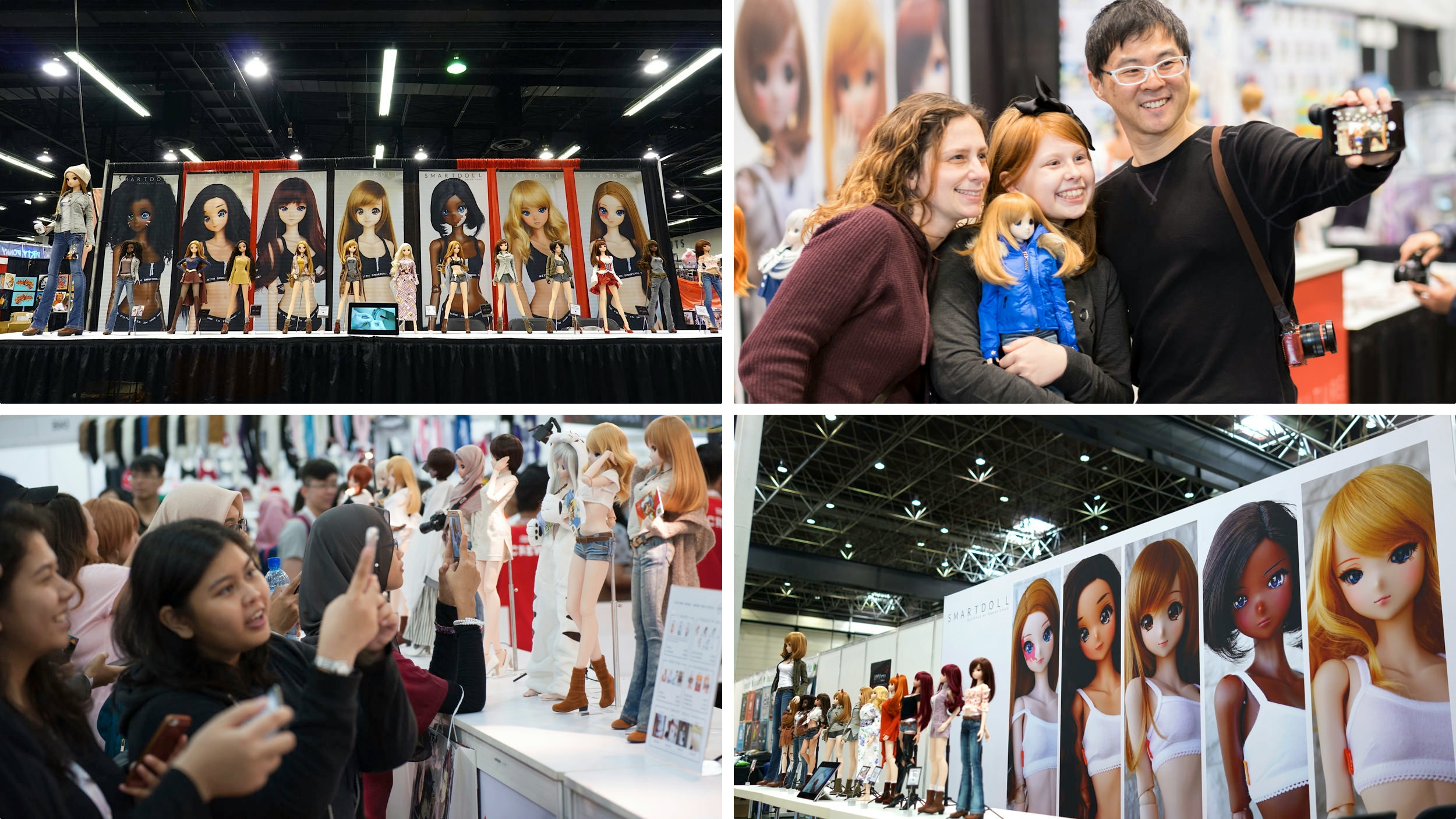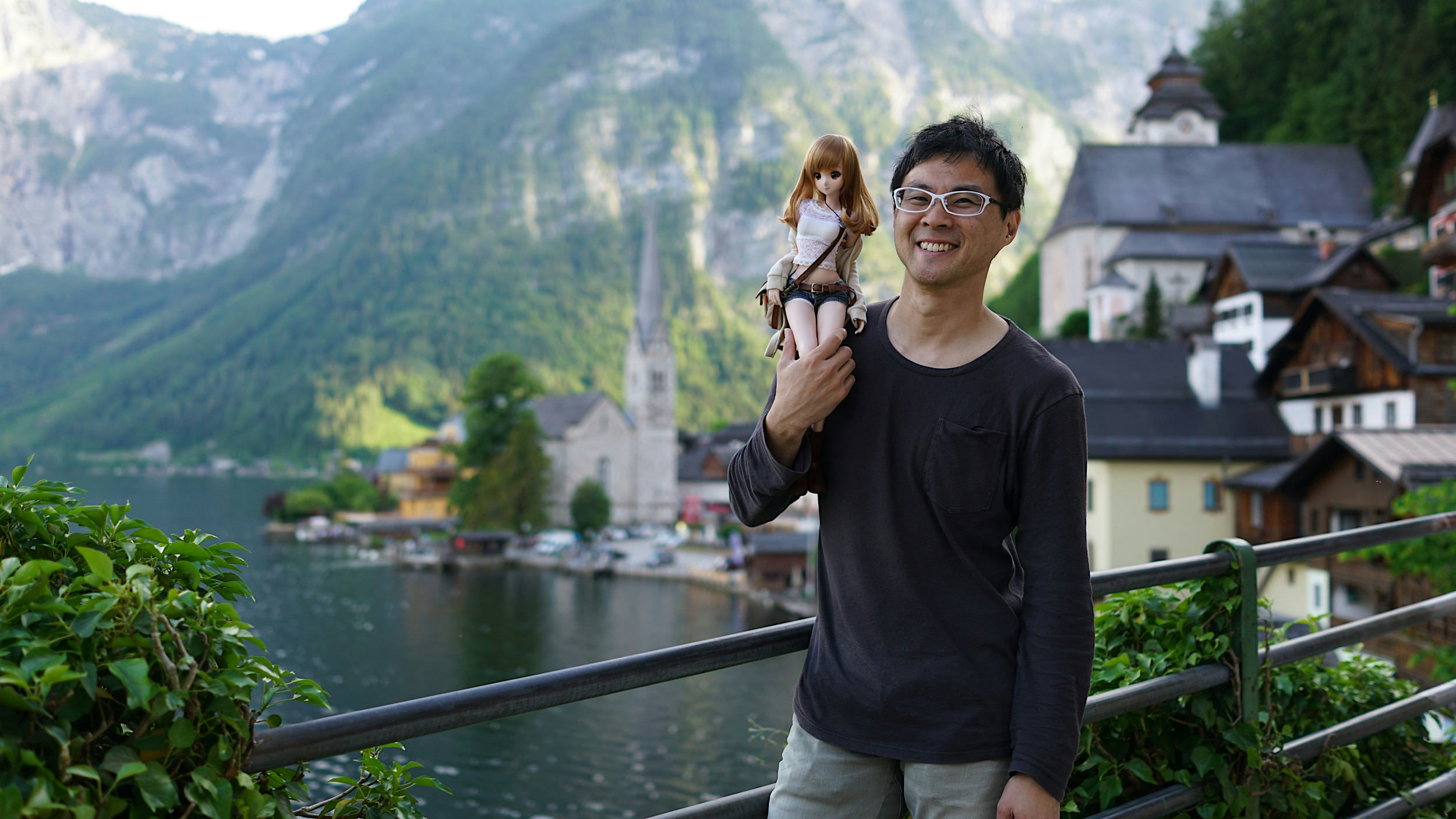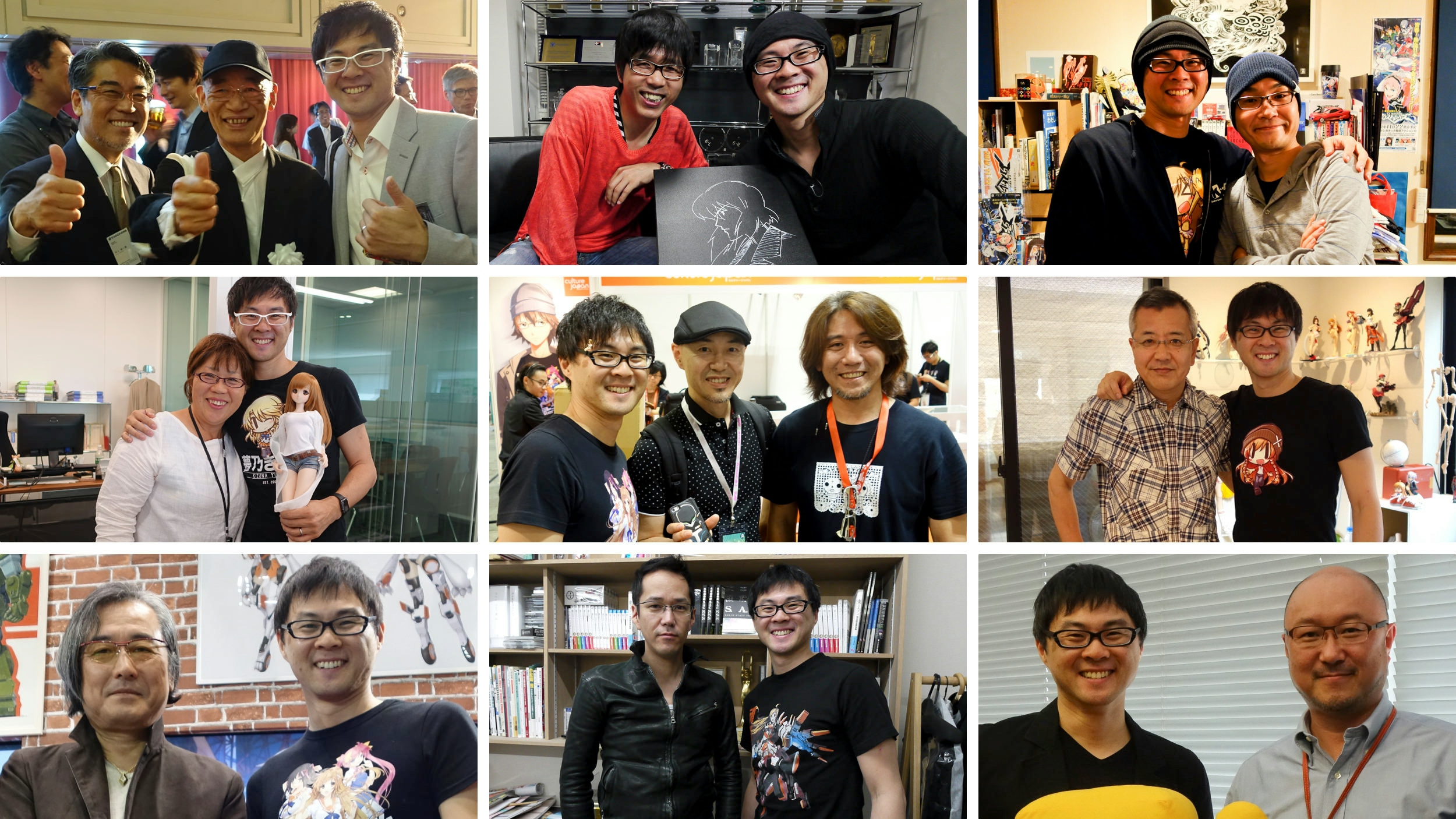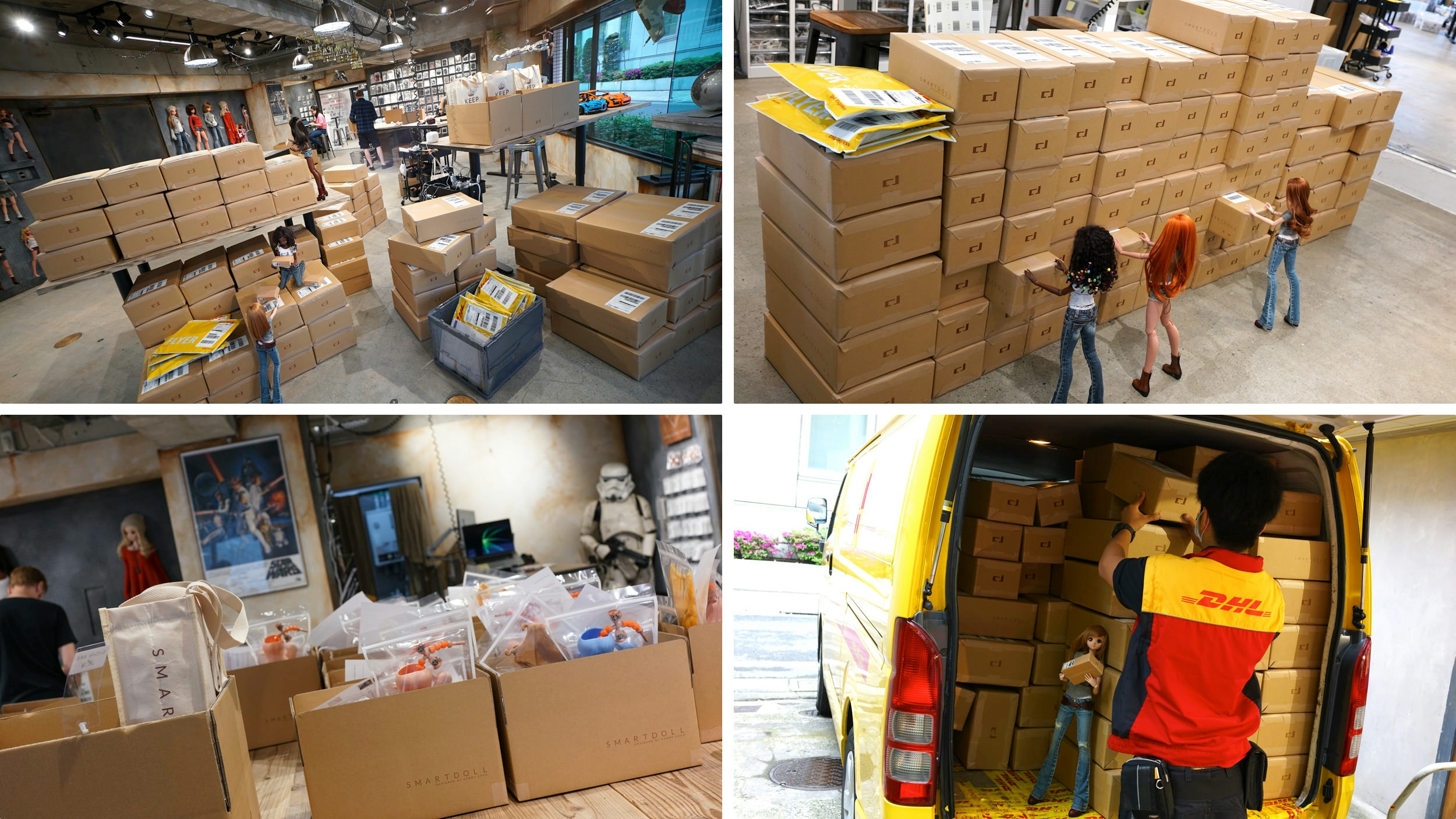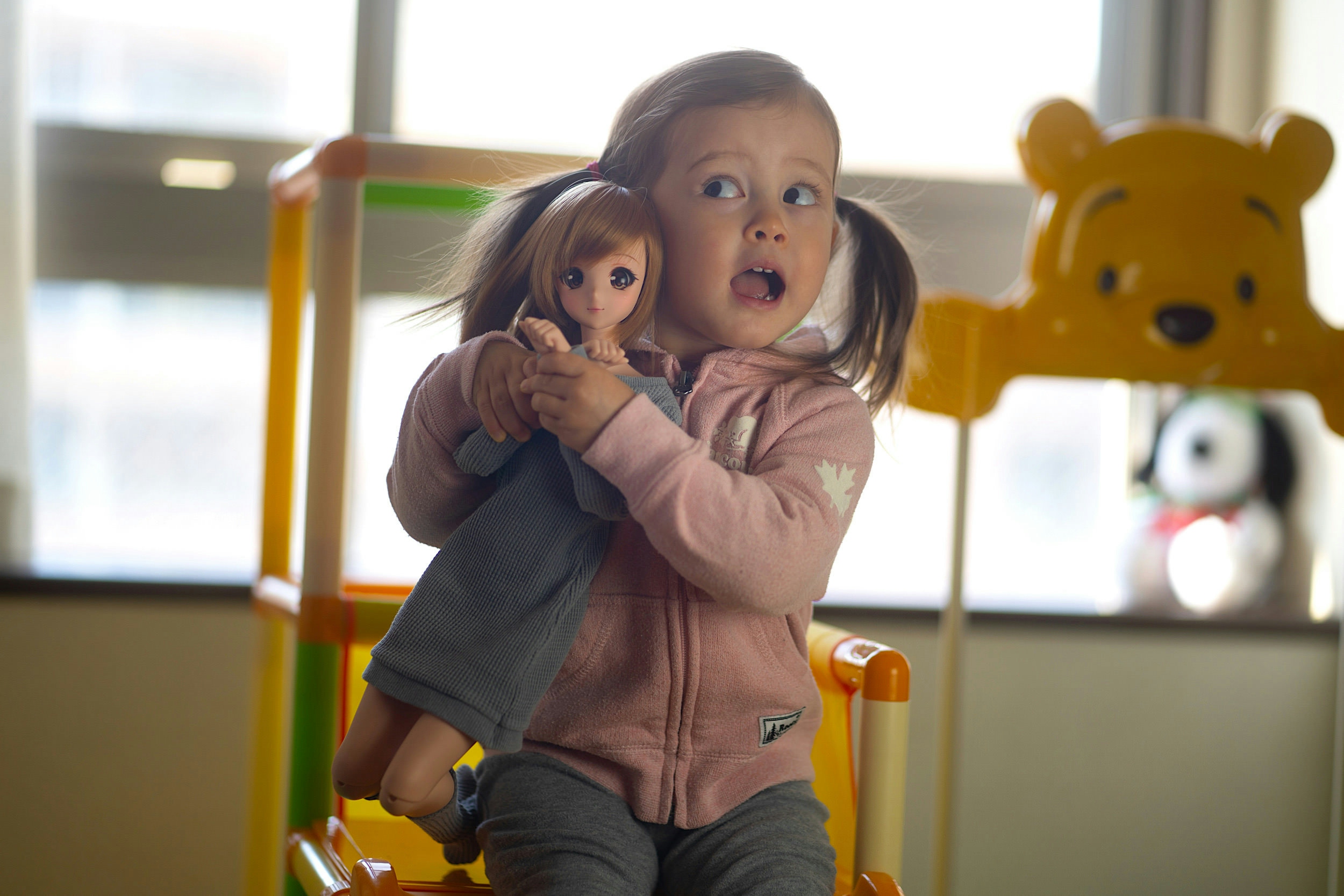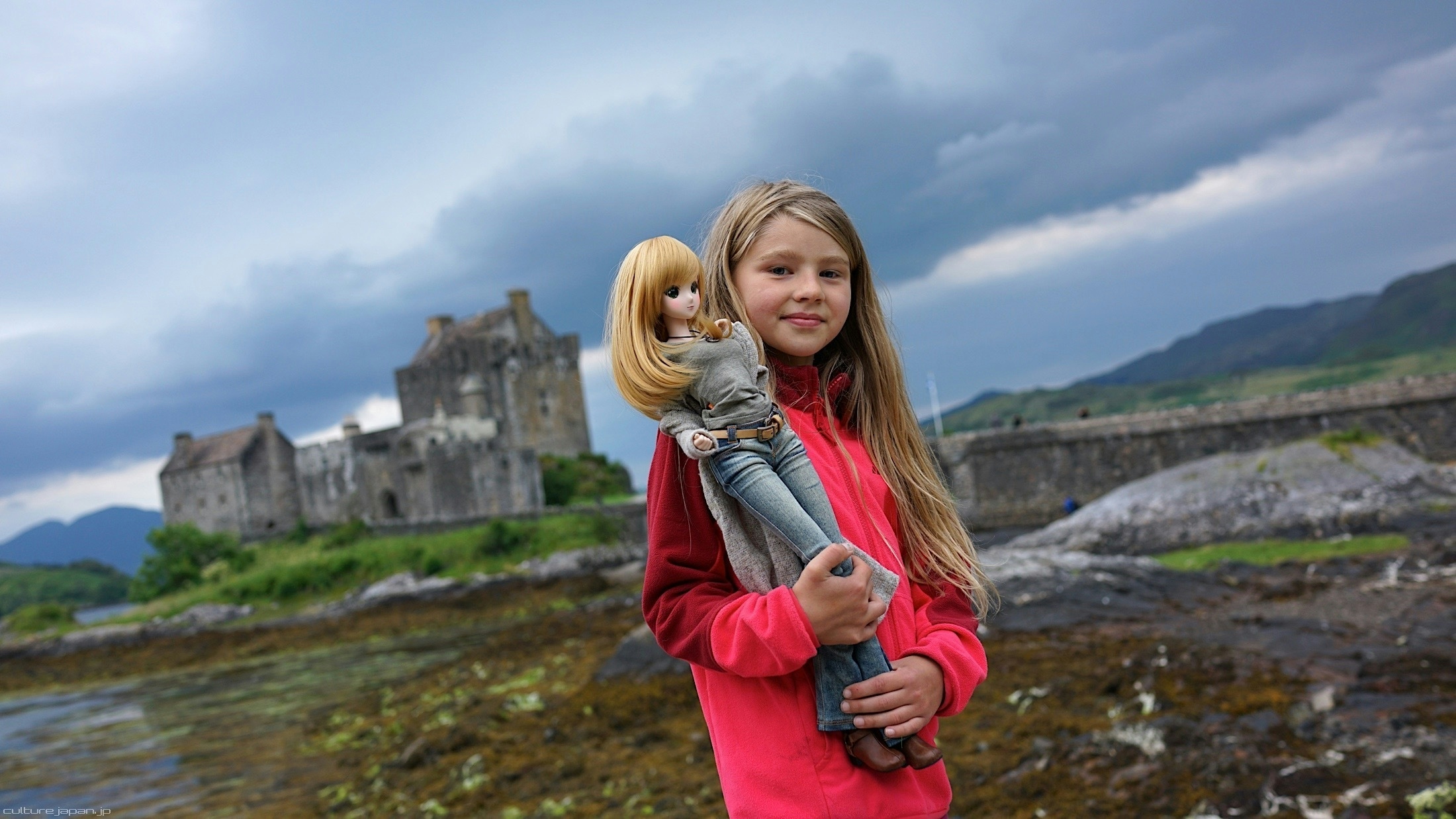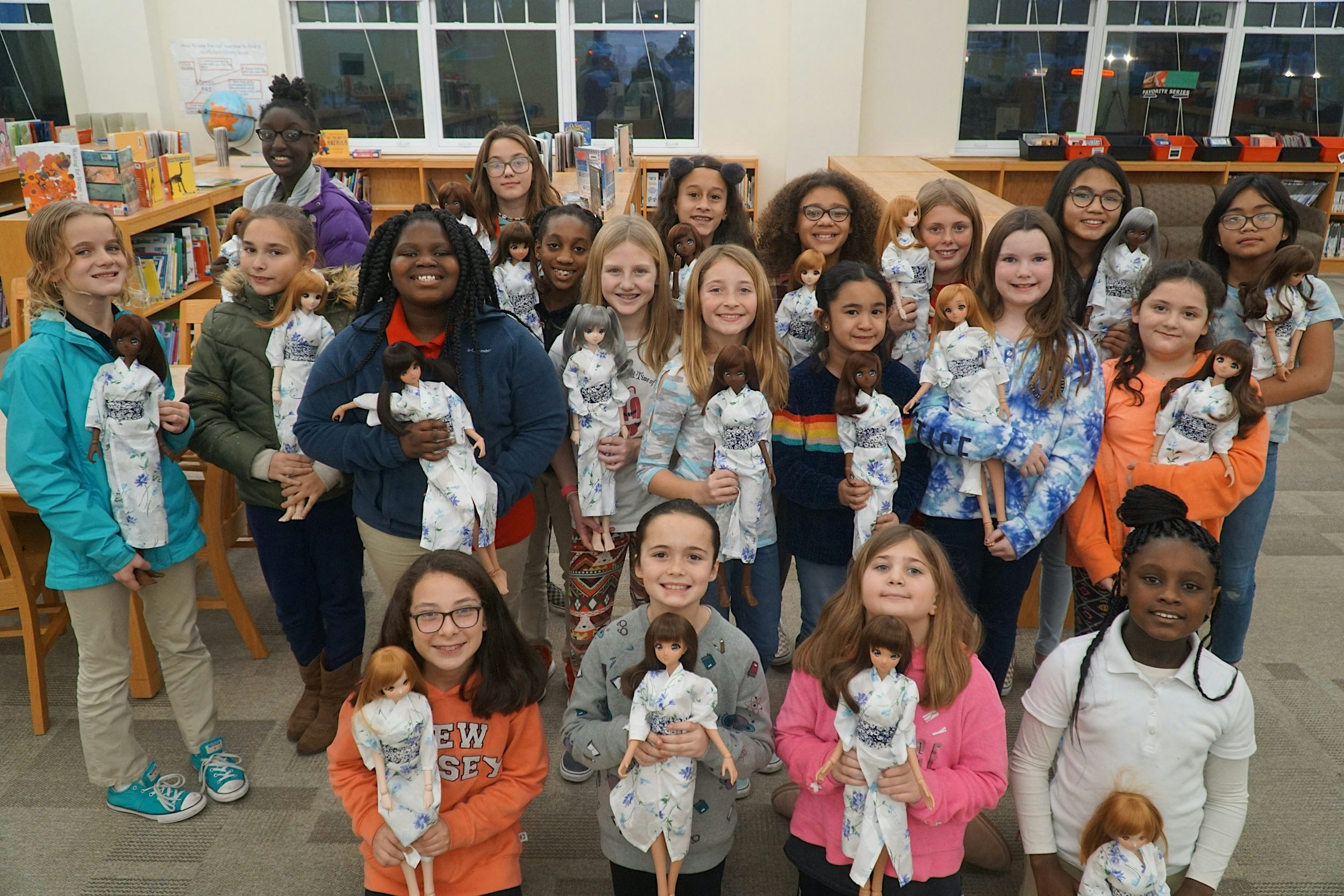What Is Smart Doll ? (old)
Hey there! I’m Danny Choo the creator of Smart Doll. I'm guessing you are here for one of four reasons.
- You balked when your child asked you to buy them a 400 USD doll and want to know why they keep asking even though you said "absolutely not!" many times.
- You are wondering what's so "smart" about Smart Doll.
- You are wondering if a Smart Doll is worth the investment.
- You are looking for reasons why you should not buy a Smart Doll.
- All the above ;-)
Each handcrafted in Tokyo, Smart Doll is a 60cm (approx 23.6 inches) tall articulated fashion doll designed as a platform for creators of all ages to enhance their creativity and learning across many fields such as fashion, art, photography, engineering and anthropology.
The design of Smart Doll is heavily influenced by various aspects of Japanese Culture. While the aesthetics of Smart Doll are based on Anime/Manga (Japanese cartoon and comics) culture, the core concepts behind our product design and company philosophy are based on a set of Japanese design principles known as Wabi-Sabi.
Wabi-Sabi is a set of 7 zen aesthetic design principles of which we focus on 3 which are FUKINSEI (imbalanced, imperfection, asymmetry), SHIZEN (naturalness, free of pretense) and DATSUZOKU (unconventional).
Wabi-Sabi states among other things that beauty can only be achieved if there is a correlate amount of imperfection. Even though we have rapid prototyping technology and precision tools to create perfect carbon copies, we instead choose to embrace the irregularities and imperfections brought about through the handcrafting process and in doing so create something which feels unique, natural, and familiar.
Before you continue to learn more, take a look at the following short video to see how we make Smart Doll.
Made by kids for kids
When I was a kid playing with Star Wars figures, I would think to myself, "why does this stormtrooper look like he's got constipation" and "why does Leia have dots for eyes." Just because kids are younger than us, it doesn't mean that they know nothing about design and quality. In fact, neural pathways in the brain form much faster and longer-lasting during the early years - meaning that kids know much more than you think. With this in mind, we never cheap out on materials or workswo/manship thinking that kids won't notice - because they will, and they do ;-)
The Smart Doll body houses a skeletal frame that has evolved over the years to include stress absorption structures minimizing the chances of a child breaking something. These structures are developed with the help of kids around the world living in different climates who give feedback during the development stages of each new design.
The internal skeletal frame enables Smart Doll to stand on its own two feet and also to hold its pose for play variety and photography. For kids with superhero strength that do manage to break something, the 1-year warranty and aftercare beyond ensure that Smart Doll will be a child’s learning companion for many years.
A Learning Companion
There are many studies that show the relation between play, and the development of cognitive and social skills which are essential for children to further learn complex concepts.
Humans became the dominant species on this planet due to our ability to imagine what doesn’t exist - and then create it.
Play is all about make-believe where children use Smart Doll as symbols to represent themselves, others or social groups through storytelling - while at the same time develop communication and creative skills that further enhances their ability to imagine.
And the big kids too ;-)
I was being interviewed by a chap from the BBC who asked me why I still played with Star Wars toys and asked if I felt childish. I replied by asking him whether he owned Star Wars toys. He responded that he stopped playing with toys when he reached the age of 12 as that stuff "was for kids." I thought to myself, "the creativity in you died the day you stopped playing with toys."
Unlike a tadpole that is hardwired to shed its tail and grow limbs to become a frog in a process called metamorphosis, humans are not hardwired to shed their interest in toys once they reach the age of 12 - it is society that wires them to do so. Folks who end up following the cookie-cutter life that society has prepared for them will more than likely end up living a life of regret, as demonstrated by research known as "The Top Five Regrets of the Dying."
Smart Doll enables kids of all ages to be creative - including adult kids like us ;-)
Adult creators around the world use Smart Doll as a platform for arts and crafts, photography, videography, and more. I'm in the middle of preparing a section that highlights the work of these creators and will link it from here when ready.
Smart Doll in Education
Smart Doll has been introduced into the curriculum of educational institutes around the world. Summerfield Elementary School in New Jersey America uses Smart Doll in their STEM activities while Toyo Institute of Art & Design, Yamanashi Gakuin High School (Japan), Kadokawa Contents Academy (Taiwan) use Smart Doll as a reference to aid their students with their character design and illustrations.
The physical size of Smart Doll means that we are able to express a higher level of detail which is not physically possible on smaller scales. This also means that folks who are designing apparel or accessories for Smart Doll need not make huge sacrifices on their visionary designs.
Designed and Made in Japan
The toy export industry in Japan played a leading role in the recovery of Japan after the war. In particular, as advances in plastics and vinyl technology progressed, the toy industry saw exceptional growth. However, toy production gradually shifted away from Japan as the rest of Asia caught up in developing their manufacturing industries.
As a result, most toy manufacturing facilities in Japan went bankrupt and only a handful of them remain in operation today. We are fortunate to be able to work with some of those facilities that still cast vinyl the same way they did since the 60’s through a process known as Vinyl Slush Casting.
Smart Doll is heavily influenced by Japanese culture which is why we feel that it’s important to keep production in Japan. Our HQ is located in Tokyo so keeping production here is also essential for us to be able to keep tight control on the quality and safety of our products.
Smart Doll Partnerships
Hollywood studios such as Warner Bros., Japanese animation studios such as Sunrise, the Japanese government, consumer brands, and educational institutes have partnered with Smart Doll as part of their business and operations. Movie and Japanese animation studios place their trust in Smart Doll to create handcrafted representations of intellectual property - for titles like Supergirl, Batgirl and Naruto.
Beauty through imperfection
"Beauty through imperfection" is a wabi-sabi concept that underpins the foundation of Smart Doll. In a world where timelines on social media make us feel inadequate with the way we look (and dissatisfied with what we have,) I feel it's important that Smart Doll continues to develop products that serve as a reminder that we should live the way we are and not the way others want us to be.
I wanted to raise awareness of folks living with conditions such as birthmarks, vitiligo, burn scarring, and cleft lip.
Unfortunately, some folks with such conditions are traumatized through alienation or bullying. Nobody should be made to feel that they need to change or hide aspects of how they look just because of what other humans (or social media timelines) think.
Valiant (birthmark), Liberty (vitiligo), Pride (acne), Courage (vitiligo), Survivor (Burn Scarring), and Foundation (Cleft Lip) symbolize what Smart Doll is built on, and as such, I make sure they are always available.
Medical Supplies
Spock once said "Logic clearly dictates that the needs of the many outweigh the needs of the few."
While Spock may have been right given the situation in Star Trek II: The Wrath of Khan, I also feel the needs of the few should be made known to the many. For this reason, I will continue to use Smart Doll as a platform to convey such needs.
At the moment we have Ostomy Pouches, Insulin Pumps, Cochlear Implants, BTE Hearing Aids, Crutches, Inhalers and Prosthetic Legs. These medical supplies are provided for free to new and existing Smart Doll owners who have to reply on them - just leave a note with your order telling us your one-liner story.
Folks who suffer from Arthritis or a similar condition, or are an amputee can request us to swap out the prosthetic leg and/or attach the wig before shipping their Smart Doll.
Your Photography Companion
Given a choice, a Smart Doll would rather be taken outdoors than be left indoors as part of the interior. This is because they were designed from the get-go with the outdoors in mind.
Each Smart Doll houses a wide articulation range skeletal frame making it possible for them to hold their pose. While a Smart Doll can stand on its own two feet unaided, the support socket located at the back of the torso enables the attachment of the included telescopic stand for extra support on uneven surfaces or during windy conditions.
Our weathered line of apparel not only protects the Smart Doll but also naturally compliments the natural landscape through the relaxed distressed fabric textures.
And unlike a human photography model - a Smart Doll won't mind if you put them in your bag or not feed them for prolonged periods.
Not-so-fast-fashion
"Fast fashion" is where high street fashion brands try to convince consumers to swap out their wardrobe every 3 months. For fast fashion to be profitable, many factory workers are forced to work in appalling conditions for low wages so that garments can be sold for a few dollars. Much of the seasonal collection which didn't sell is either burned or buried in landfills.
I decided to go for more of a Not-So-Fast-Fashion approach by focusing on quality rather than quantity. Even though production costs in Japan are much higher than producing elsewhere in the world, I would still rather pay more to guarantee the safety and quality of our products especially because they are going to be handled by children.
We pay vendors the highest rates in the industry to make sure we can both maintain a win x win partnership - if we squeeze our vendors to lower costs which eventually leads to them going bankrupt, we would essentially be shooting ourselves in the foot - but we are in this for the long run and need our feet to do the running ;-)
We spend whatever it takes to guarantee the quality and safety of our products regardless of whether consumers feel that our price points are reasonable or not. If we focused on what the consumer felt was reasonable in terms of price points, we would have to not only force vendors to accept lower unit costs but also force our employees to work longer hours for fewer wages. We would also have to compromise on the materials for cheaper and possibly unsafe substitutes - all of which we are unwilling to do.
Our apparel items take at least half a year to develop for even the simplest-looking items. The reason is that we want to sell them for years too. I don't want to die with my last words being "I made apparel that lasted 3 months before it was taken off the shelves - and then buried in landfill" - this would mean I lived a completely meaningless life.
Because we are designing for a fashion doll that was designed to be taken outdoors, our apparel items must be field tested for durability. Field testing also enables us to establish a stain rating before they can be released.
If you rummage around our apparel section, you will see the release date on the product detail pages and notice that many of our items are long sellers - this is because fast fashion is simply not sustainable.
Post-Apocalyptic Fashion
In addition to our weathered apparel items, we also created a line of post-apocalyptic themed wear. In a post-apocalyptic scenario, resources are minimal where humans would scavenge and make do with what's available. Survival naturally has a higher priority than "keeping up appearances" - thus clothes are made to keep warm or cool rather than look good. Where there are not enough fabrics, humans of the post-apocalyptic era would patch together what they can find.
Our post-apocalyptic wear is designed to symbolize two things - "work with what you got" and "it really doesn't matter what other people think."
For whatever reason, not all of us will have the means or resources to do or make what we want. But it is this sort of restriction that enables us to innovate as a species. Complaining about what you don't have will bring you nothing - while the will to work with what you got will bring you a step closer to what you are trying to achieve.
Living in a post-apocalyptic environment, outrunning zombies and scavenging for resources to make medical kits or molotovs will give you a survival advantage over spending time on how you look. A zombie does not care what you are wearing when they are eating your brains.
Oh wait - I just remembered that we have been living in a post-apocalyptic environment since 2020. So there you go - a great opportunity to rethink how much time you are spending on appearances for the sake of others and whether you really do need 20 sweaters - for either you or your Smart Doll.

Why A Fashion Doll?
During my early twenties, I made shoes for Lady Diana in my father's studio where I learned about design and the fashion industry.
In my early thirties, I made website features for customers as Website Manager at Amazon where I learned how to build large-scale infrastructures.
In my early forties, I started to make fashion dolls which became a platform for myself, my team and the families that choose Smart Doll to learn and grow as designers.
So why fashion dolls? Not only is the human form the most familiar of shapes - it is also a medium where we can express our ideas and beliefs while learning and being creative at the same time.
Archaeological findings from the Upper Paleolithic period 40,000 years ago show that humans have been expressing their ideas through the human form, handcrafting statues such as the Venus of Hohle Fels, and painting in caves.
The Smart Doll platform touches many fields, including fashion (apparel, footwear, accessories), cosmetology, anthropology, science, technology, engineering, mathematics, industrial design, photography, education, and art.
Since product development started back in 2012, Smart Doll has always been driven by the idea of "living your own life - not the lives of others." While this idea is not common in the retail and manufacturing industry, it drives every decision we make, from running the company to product design.
Design
Smart Doll is not the most articulate doll on the market - but probably not the worst looking either ;-) Increasing the articulation range inevitably introduces more joints and seams, which I feel are unsightly. Instead, I decided on a balance of aesthetics and articulation.
For example, doll designs traditionally have the mid-body joint in the middle of the torso, which is highly visible. The Smart Doll mid-body join is located beneath the bust, making it discreet while maintaining articulation. The mid-body join becomes even more discreet when you swap out the default small bust with a medium.
Our skin tones are called Cocoa, Tea, and Cinnamon.
Internal Skeletal Frame
The internal skeletal frame enables Smart Doll to hold their pose for play variety and photography. Designed with rigid joints, each frame is put through torque testing so that Smart Doll can hold objects like your mobile phone and stand on its own two feet without the aid of a stand.
You can still attach the telescopic stand (included with all Smart Dolls) to the Support Socket located at the back of the torso for extra stability on uneven surfaces or in windy conditions.
This design feature avoids the need for cumbersome conventional stands (not ideal for travel) which resemble a “saddle up the crotch” or “C shape” around the waist that would hinder the aesthetic form of Smart Doll and its apparel.
Our telescopic stand can also be swung to hide behind either leg when taking photos.
A body not to look up to
The Venus of Hohle Fels and Lion-Man (also carbon-dated back to 38,000 BCE) are both depictions of the human form but sculpted in different styles - one is round and curvy while the other is tall and thin.
The Smart Doll body has both curvy and tall design features with long arms and legs but is in no way trying to be a role model in terms of body shape. Stating the obvious, if anybody aimed to look like a Smart Doll, they would certainly be mistaken for an alien and maybe taken to Area 51.
Why the lack of variety?
While I think that having more body shapes and sizes with more skin tones would benefit the consumer - it would not benefit our small team who would have to work longer hours to develop, maintain and store the extra inventory. I want to create as much variety as we can while keeping a healthy balance of work and play for our team - even if it could mean less sales due to the lack of choices for consumers.
This video shows you how we cut the flash away from each body piece.
This video shows you is how each body is assembled - each individually tweaked for its set of vinyl parts.
Wabi-Sabi (how the design principle FUKINSEI works for us)
FUKINSEI [不均整] (Imbalanced. Beauty in imperfection, asymmetry.) is one of the Wabi-Sabi design principles that we employ in our design process. Some folks say that Wabi-Sabi is just an excuse for poor workswo/manship - but then again these are usually the folks who seek perfect machine-made products.
I understand that Smart Doll is a hefty investment which is why it's important for us to properly set expectations. It is in our interests that a potential customer ends up with a product where the quality and philosophy matches their needs even if it means they end up shopping elsewhere.
Some folks understandably expect perfect machine-made products that all look the same - unfortunately, because our Terminator models (robots that can make stuff look exactly the same) were all sent to the past and then destroyed by some "John Connor" - we continue to ask our talented team of humans to handcraft each and every Smart Doll. Thus each and every Smart Doll is blemished and imperfect - just like the humans that made them.
Imperfect Body
The Smart Doll body is created using a method known as slush casting. Each piece is manually cast which brings about imperfections such as birthmarks (like the one pictured above), stretch marks, and other blemishes. Only Mother Nature gets to decide where and if they appear on the body surface.
The slush cast molds are created through a process known as Electroforming. This is a natural process where copper deposits are attracted to the Master Model surface through Electrophoretic deposition. Mother Nature decides what the surface is going to look like which regularly features bumps. These imperfect surface features are then visible on each and every part cast from the mold.
Imperfect Faces
A 3D model of a face would typically be modeled on one side and then mirrored to the opposite which in theory should look fine - but in reality gives an uncanny-valley look. This is because humans have evolved to recognize that humans don’t have perfectly symmetrical faces and instinctively know a body snatcher when they see one. When modeling the faces for Smart Doll, we always make sure to introduce asymmetry at the final stage of development. We also do this for the torso and bust where one side is actually ever so slightly larger than the other.
Paint masks for the face are also created using the electroforming method. Once the masks are created, each mask has to be precision chiseled to create a stencil that will aid in creating the face design. While each character will look similar - no two will ever look exactly the same. Face designs also feature asymmetry - eyebrow height, eye shadow thickness, mouth edge and blush intensity are all uniquely painted.
This is a photo of Mirai out and about at Meguro Fudoson Tokyo. If you look very closely at her face, you may notice that her left eyeline is thicker than her right. This asymmetry creates a natural look that humans are most familiar with.

Cost To Design (how the design principle DATSUZOKU works for us)
There is a conventional design/manufacturing method known as Design-To-Cost (DTC) used by most manufacturers to control the costs of creating a product. This is done so that a product can be sold at a competitive price point while retaining a profit at the same time.
To remain competitive, a manufacturer must consider what an average consumer thinks is "reasonably priced" for that genre of product and then work top-down through the production process - "top" being the consumer who are considered to be at the top of the food chain.
Most manufacturers want market share meaning they need to price competitively by setting low price points. Some manufacturers innovate to achieve this, but due to the costs involved in research and development, what usually happens is that the quality of materials or workswo/manship and/or labor/vendor costs are sacrificed in some way or another.
While Design-To-Cost works for most manufacturers, I choose to apply the design principle of DATSUZOKU [脱俗](Unworldly, Unconventional.) and use a Cost-To-Design approach instead.
Smart Doll was designed for myself from the very beginning, and to this day, I remain the primary target "consumer." Humans have a selfish gene and inherently want the best for themselves - I am no exception. This means there is no point in designing to any specific cost as I want my products to have the best quality materials and workswo/manship. Using a Design-To-Cost approach would only mean that I end up with a cheap piece of poo.
Our "Cost-To-Design" approach in spending whatever it takes to attain the level of quality that we seek has a "downside" - fewer customers would find our price points "reasonable," leading to less sales and market share.
But as money is not the driving factor behind what we do, we will continue with the Cost-To-Design model to create products with the quality that we want for ourselves - even if it means that most folks end up buying other brands.
Designed for Simplicity
The fashion doll hobby can be an overwhelming first-time experience for a newbie. With Smart Doll, I wanted to remove complicated concepts and in doing so make it easy for a first-timer to get started. As a result, 80% of our customers are first-time fashion doll owners.
All you need to do is to pick a face design that appeals to you. Each Smart Doll comes wearing a sports bra and undies so that they don't catch a cold on the flight over to you. They will look great at home on your desk or beside your bed but will probably get a cold if they venture outside in just their default sports bra and undies. If your Smart Doll starts to complain about the cold, then it could be a good idea to either buy them some apparel - or use the patterns that we distribute for free to make your own.
Smart Doll comes with a painted face, eyes, and a wig so you do not need to buy anything extra as they are designed to be played with straight out of the box. The only thing you need to do is attach the wig which can be fiddly but check the Welcome Guide and you should be up and running in no time.
Many of our Smart Dolls are created to symbolize an idea, so you may want to check out the descriptions for characters such as Valiant, Resilient, Fortitude, Independence, Strength, Nostalgia, Freedom, Challenge, Dauntless, Liberty, Reflection - meet them in the Smart Doll section.
If you are strapped for time and just want to pick one out as a prezzie for a child or yourself, simply pick the girl who started the brand - Mirai ;-)
Your Smart Doll - Your Freedom
As mentioned in the above section, you can use our free apparel patterns to either make stuff for yourself or to sell. Folks have been using the Smart Doll platform to create apparel and accessories and sell them on platforms such as Etsy.
Some doll manufactures will charge you a "model fee" if you try to use their products to monetize - even though you already paid for the product. We will never ask for such fees because we encourage folks to take the lead of their lives by starting a business on the side. This is also the reason why we allow our staff members to have their own side business too.
I encourage everybody to have side projects where one will not only learn many new crafting skills but also everything that goes into making a product - selling online, payments, inventory management, shipping & tracking, customer support and so on.
Many side projects in my career have contributed to what life is now - learning Japanese, learning programming and 3D graphics, making websites, and so on. We can all make time for this even though we are schooling or working.
The skills and experience you gain through side projects will also open up more opportunities in life and maybe even prepare you for when life does not go as planned.
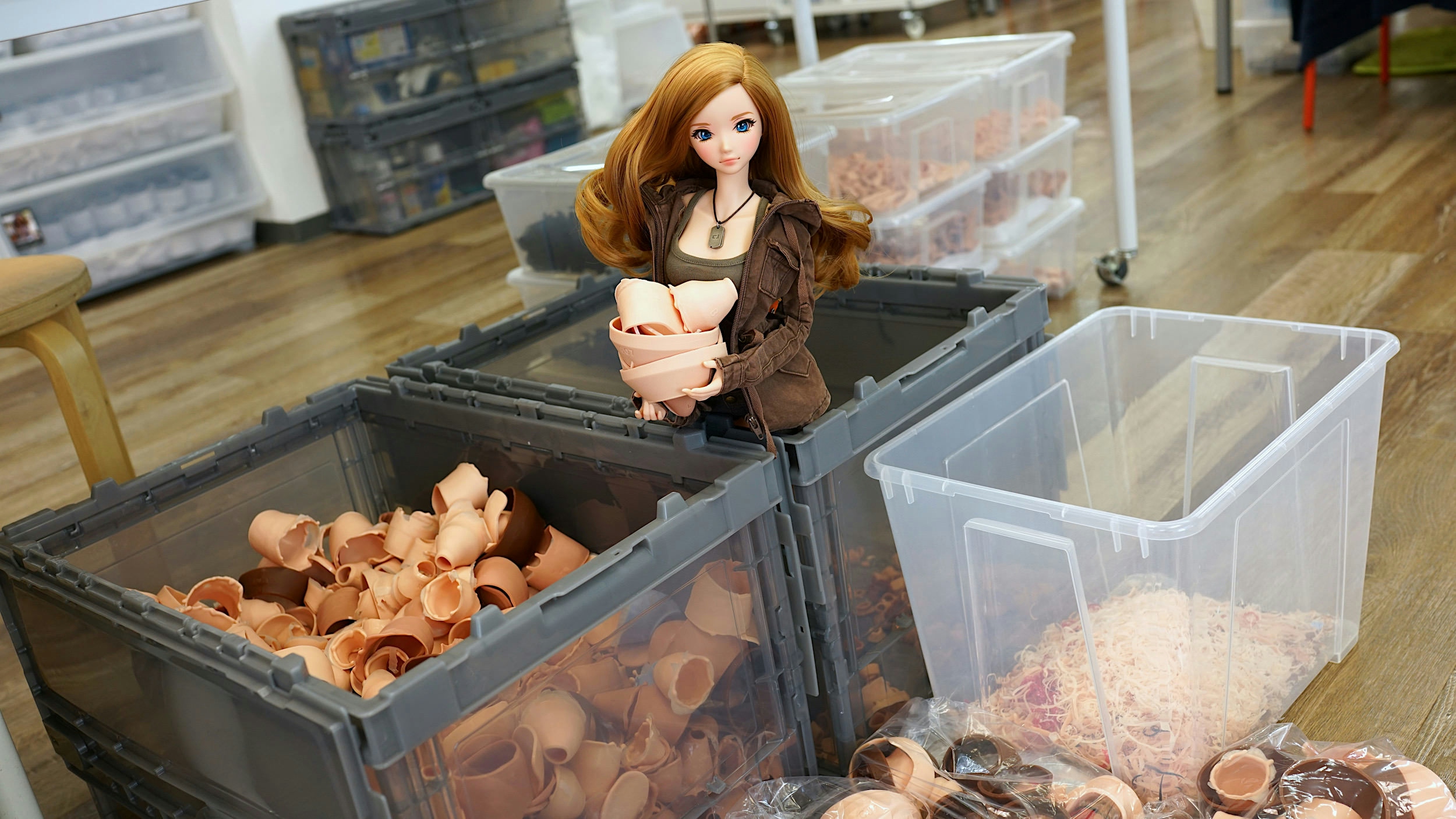
Smart Doll and the impact on the environment
All manufacturing has an impact on the environment in terms of energy consumption, waste produced and resources extracted from the planet. I wrote a separate post on what we are doing to reduce or offset our environmental footprint but a summary of that post is as follows.
- Encourage people not to buy - all product pages have a "why you should not buy this" message asking the consumer to think twice about buying a Smart Doll.
- Reuseable packaging - the tote bag can be used for the Smart Doll and groceries, while apparel packaging is resealable.
- Not buying online ad space - ads are served up by server farms requiring a vast amount of energy leading to more carbon emissions.
- Not embracing Japanese work culture that encourages employees to work long hours through the evening - this reduces energy consumption in the studio.
- Putting a cap on how much we produce every month.
- Routing rejects to the outlet instead of to the landfill.
Roadtrip Companion
Are you finding yourself on more roadtrips now that the pandemic has put international travel on hold? Same here! Smart Doll's make great travel companions and photography subjects for when you do a pitstop at a scenic spot. Don't forget to take extra food for your Smart Doll.
Tech Specs
And for those of you who like tech specs - I've got loads for you. The sizes and weight listed below are for our Smart Doll girls.
- Product launch: June 2014
- Size: Approx 60cm (23.6 inches) tall / 11cm (4.3 inches) wide at shoulders
- Size when knees bent: Approx 41cm (16.1 inches) tall / 25cm (9.8 inches) from toe to knee (you need this info to figure out what bag to buy)
- Weight: Approx 650gms (1.4 lbs) with wig
- Category: Fashion Doll
- Outer Shell Material: Soft Vinyl
- Inner Frame Material: POM (Polyoxymethylene)
- Wig Material: PET (Polyethylene Terephthalate)
- Wig size: roughly 8 - 9 inches (wigs standards are measured in inches for some reason)
- Eye Material: Acrylic
- Eye size: 22mm (eye sizes are measured in mm for some reason)
- 3D Software used for design: Zbrush, Solid Works
- 3D Printer used for prototyping and masters: ATOM
- Country of manufacture: Japan
- Designed by: Danny Choo
- Distributed & sold by: Mirai Inc
3 rules of Smart Doll
Owners need to make sure they can follow the 3 rules of Smart Doll
- Keep away from direct sunlight for prolonged periods
- Keep away from water
- Do not feed after midnight

Creators and Consumers
There are two types of humans that inhabit this planet - creators and consumers.
Creators see something they want to change in the world and take necessary risks to create those changes in the form of ideas, products, or services.
Consumers are those who are unable or unwilling to take such risks and instead rely on creators to make those changes for them.
However, society evolved a culture where this reliance is flipped where creators (and companies) instead rely on the consumer. To promote such culture, Americans invented the saying "the customer is always right" while in Japan, they went a step further with "the customer is god" - in Japanese lingo, that would be "Okyaku-sama wa kami-sama."
The service and retail sector suffers the most from this culture where transport staff are assaulted, restaurant servers verbally abused, and factory workers are forced to work in appalling conditions. The consumer feels that just because they are the ones paying money, they have the right to have others treated in such a manner to meet their needs.
Creators and companies have ended up cultivating this culture in fear that consumers would take their business elsewhere. Consumers enjoy this celestial treatment while employees are reminded that the customer is always right no matter what.
However, a small number of creators and companies have chosen to instead cultivate a culture where employee needs are placed above the needs of the consumer. When this happens, the consumer thinks they are losing out on something they feel is rightfully theirs. But because such consumers are unable or unwilling to expend effort in becoming a creator themselves, they do the only thing they can to get such unconventional creators to change - they take to the Internets using a familiar line - "this creator/company can't take criticism." Search on Google for "(any company name here) + can't take criticism" to see what I mean.
My company is indeed such a company that "can't take criticism" because I choose not to put consumers before employees. Consumer requirements such as increased selection, prolonged availability, lower price points, the creation of the exact products they want, and adopting the "the customer is god" model could be easily achieved in a few simple steps.
- Longer working hours will mean we can make more. This is normal in Japan and thus socially acceptable.
- Force employees to work in cramped spaces (again this is normal in Japan) to make room for more inventory and increase product availability.
- Reduce wages so we can lower costs leading to price points that consumers deem "reasonable."
- Force vendors to work for lower unit costs meaning more savings for the consumer.
- Choose cheaper quality materials and fabrics to save on costs meaning more value for consumers.
- Cut corners in workswo/manship to save on time and costs - thus passing on savings to consumers.
- Remind employees that the customer is number one and the employee is number two - and we all know what "number two" really means.
- Instead of paying employees a bonus relative to sales volume, pay them a fixed bonus. This will enable us to reduce price points for consumers.
I could implement these steps next week if I wanted to. Instead, I give my condolences to consumers who at least tried to get us to change our business practices with a "Smart Doll can't take criticism" skid mark on the Internet - a sign of not only forfeit but acceptance that they want to have others create their future instead of trying to create their own.
Now here is the plot twist - the existence of such consumers is actually essential to our brand's growth. They help discourage like-minded folks from buying our products ;-)
Not all consumers live life with such entitlement. I am fortunate and grateful that customers who chose Smart Doll share our employee-centric values.
Smart Doll launched in 2014. By focusing on employee welfare and the quality of the product, we have since been able to build a flourishing business - even during a pandemic for what is deemed a "non-essential" item.
As bonuses are calculated relative to sales volume, we are now able to pay a single employee the same amount that we would have paid several employees during our early startup years. I believe that a company should share its wealth with the people that make it a reality.
Research shows that 90% of startups fail. Maybe it's because they adopted the "Customer is God" model instead of focusing on their own people.
Startup Story
During the pre-pandemic era, I've been fortunate to have had the opportunity to talk at events around the globe about our business model. My hope is that startups adopt the employee-centric model instead of the customer-centric model. After the pandemic, I would love to share my ideas at an event near you ;-)
Meet the owners
While many folks choose Smart Doll - either for themselves or their children, I want to emphasize that our products are not designed for everybody. I strongly recommend that you invest time on this website to learn about the product before making a decision to buy. If you are still not sure - you can find many owners online to ask. The #smartdoll tag is usually a good place to start.
Smart Doll Land
Our studio is located in the heart of Tokyo - Gotanda, which is a couple of stops from Shibuya on the JR Yamanote line. Everything from product design and prototyping to the handcrafting of each Smart Doll and shipping is done at the studio. The first floor was a retail store called Mirai Store Tokyo until the pandemic hit - now, it's used for shipping and the occasional unboxing filming ;-)
#TEAMSMARTDOLL
I believe that a product for a diverse world can only be made by a diverse team. For this reason, our team is made up of folks from across the globe who have gathered in Tokyo for their love of Japan - and cute things. Our team members hail from many backgrounds including mechanical engineering, programming, architecture, apparel design, food and retail.
The team is made up of both folks who like fashion dolls and those who have never previously been interested in the hobby. This is because if we only hired folks who are doll hobbyists then we would only know how to market to existing doll owners - likewise, if we hired just folks who are not familiar with dolls then we would not be able to make a solid product.
Learn more about the team that makes Smart Doll.
Serving her country
Smart Doll is modeled after our mascot character Mirai Suenaga - without her, Smart Doll would not exist today. In 2013, Mirai became an official mascot for Japan Tourism and in 2014 she became an official mascot for Malaysia Tourism. Mirai regularly joins me at board meetings I have with the Ministry of Economy, Trade and Industry, and the Japanese Cabinet. Although she does get shy and ends up not saying anything.
About Danny Choo
Born and raised in London England, I discovered Japanese culture through gaming machines such as the Sega Megadrive and anime such as Super Dimension Fortress Macross.
I wanted to learn more about Japan but in order to do so, I needed to learn Japanese because my only gateway to Japan back then was a couple of Japanese bookshops in London - no internets back in the late 80's ;-)
I started to self-study Japanese by reading manga (Japanese comics) and decided to get a job at a Japanese restaurant called Benihana so that I could practice my Japanese while earning a few quid at the same time. At Benihana I was washing, serving, and occasionally breaking dishes. I got to improve my Japanese during work and also met my wife there.
I decided to finish off my Japanese language learning at London University which lead to a job at Japan Airlines in London. I eventually made it to the land of the rising sun where I worked in IT for several years doing marketing for the scientific journal Nature, Website Manager at Amazon and a Product Manager at Microsoft.
In my spare time, I wear stormtrooper armor and go dancing around Tokyo with my Smart Doll...
About Mirai Inc
After saying sayonara to a steady paycheque in 2007, I left corporate life to startup a company with wifey called Mirai Inc. We started off web consulting for the likes of Disney Japan and Columbia Music and before we knew it, we had created a brand called Culture Japan which consisted of a blog, TV show and character goods of our mascot character Mirai Suenaga.
The Japanese government recognized our work in sharing Japanese culture and appointed me as an advisor of various "Cool Japan" committees.
By 2012, I started development on a fashion doll which was to be modeled after our mascot Mirai and by June 2014 she was ready for launch. On 2013 April Fools Day, I announced that Mirai was going to be a terminator robot running on Android that could do your homework - this is the reason why I called the product "Smart Doll." News on the project went viral which was great but also meant that it became difficult to change the name without causing confusion - and so the name stuck.
Because of my April Fool lies, I always get asked "what's so smart about Smart Doll?"
My response is the video below ;-)
Games and Anime
If you watch Anime (Japanese animation) or play Japanese video games then you may be familiar with some of the folks I work with. I would like to take this opportunity to thank them for believing in my work- without them, Smart Doll would not be the brand it is today. Here are some photos with them in no particular order from top left to bottom right.
- Shinichiro Inoue (Executive Fellow, Senior Advisor to KADOKAWA Co., Ltd.) with Mr. Yoshiyuki Tomino (animation director and screenwriter, "Mobile Suit Gundam," etc.)
- Mitsuhisa Ishikawa (President of Production I.G. Inc., "Attack on Titan", "Ghost in the Shell", "Neon Genesis Evangelion the Movie", etc.)
- Dai Sato (Screenwriter, Musician "Ghost in the Shell: Stand Alone Complex", "Cowboy Bebop", "Eureka Seven", etc.)
- Hiroyo Shimizu (Executive Vice President of Kotobukiya Corporation, "Frame Arms Girl", "Megami Device", etc.).
- Digitarou (President and Representative Director, Nitroplus Inc. "Steins;Gate", "Psycho-pass", "Puella Magi Madoka Magica" etc.)
- Takanori Aki (President of Good Smile Company, "Nendoroid", "Black Rock Shooter", etc.)
- Kenji Uchida (Chairman of Sunrise, "Mobile Suit Zeta Gundam," "Code Geass," etc.)
- Kunio Okawara (Mechanical designer, "Gatchaman," "Mobile Suit Gundam," "Votoms," etc.).
- Kenji Kamiyama (Director, Screenwriter, "AKIRA", "Kiki's Delivery Service", "Ghost in the Shell: Stand Alone Complex", etc.).
- Shin Unozawa (Executive Officer, Namco Bandai Holdings, "Mobile Police Patlabor," "THE IDOLM@STER," "God Eater," etc.).
Pandemic Shipping
When orders are placed on our online store, we contact the customer to confirm order details and make sure their expectations are being met - we can't take money if there is an inkling that the customer may be better off with other brands that could serve their needs better - we want the best for customers even if they end up choosing other brands.
Once orders are good to go, we pack and ship the order out from our studio in Tokyo.
Since the 2020 pandemic started, we switched from EMS shipping to Courier shipping which greatly increased the speed in which our Smart Dolls reach their new owners.
Reasons not to buy (how the design principle SHIZEN works for us)
Whenever I encounter a new product or service brand, I always take a look at the message they want to convey to a newbie. 99.99% of the time, the message I see is "our product or service is far superior to our competitors and you should choose us."
But how can this be possible when humans have different needs? Unless one is selling oxygen (which I guess most humans are fond of), claiming that a product or service fits everybody's needs would be representative of that company's philosophy - that it's OK to lie.
The Wabi-Sabi zen design principle SHIZEN [自然] describes naturalness and free of pretense - we embrace this philosophy which is why it's important to set expectations about the product and remind folks that Smart Doll can't possibly be better than other brands - because all humans have different needs.
The Before You Buy document is linked to from multiple locations on the online store including an obtrusive popup that appears just before one can proceed to check out. The document is there to set expectations and warn folks that Smart Doll may not be what they are looking for. Many folks tend to skip it only to be disappointed when the product arrives - disappointment that could have been avoided by taking time to read it.
Here is an overview of the type of folks who should avoid buying a Smart Doll.
- Folks who are looking for a perfect product free of blemishes. They plan on handling the doll with gloves and keeping it in a box.
- Folks who are looking for an indestructible product that will retain its condition and outlive its owner.
- Folks who believe that the customer is always right and expect to be treated like a god.
- Folks who want to support a company that will "accept criticism" by implementing their suggestions of lowering price points to what they feel is reasonable, by keeping abundant amounts of stock available indefinitely just in case they need something, and by making all the products that they want.
- Folks who want products shipped from Tokyo to arrive within 24 hours regardless of where in the world they are and regardless of any pandemic going on.
- Folks who are unwilling to read the product descriptions before making a purchase.
If the above description sounds like somebody you know, then I know that 99.99% of other companies would gladly serve their needs ;-)
With Smart Doll, The Future Is In Your Hands.
Smart Doll was modeled after our Mascot character Mirai. "Mirai" in Japanese means "future." In the early years when there was only Mirai, I used the slogan "With Smart Doll, the future is in your hands" which had a few meanings.
The first meaning was obvious in that if you had a Smart Doll then you had Mirai (future) in your hands.
The second meaning encompassed my vision for the future where Smart Doll would set a new standard of not only industrial design but also business ethics too.
Smart Doll may only be "just a doll" but to us, it's an opportunity for us to learn and share our learnings. Even if you don't end up getting a Smart Doll, I would be more than happy if you are able to take away some of our learnings and apply them to your career development or business operations.
However, if you are ready to take the plunge, do start with the Buyers Guide which has details of shipping times, costs, and other expectations that we want to set. I look forward to seeing you in Smart Doll Land ;-)
Danny
Media Coverage
Smart Doll has been featured on global media outlets such as CNN, Bloomberg, CBS, and KTLA.
Meanwhile, back home here in Japan, Smart Doll is also regularly featured on the local TV stations, such as Jun Sanpo, ZIP, and Tabizukin. Mirai Smart Doll got her first acting gig alongside many Japanese actors and actresses in the TV drama Doesu Deka starring Tabe Mikako and Yoshida Yo.
